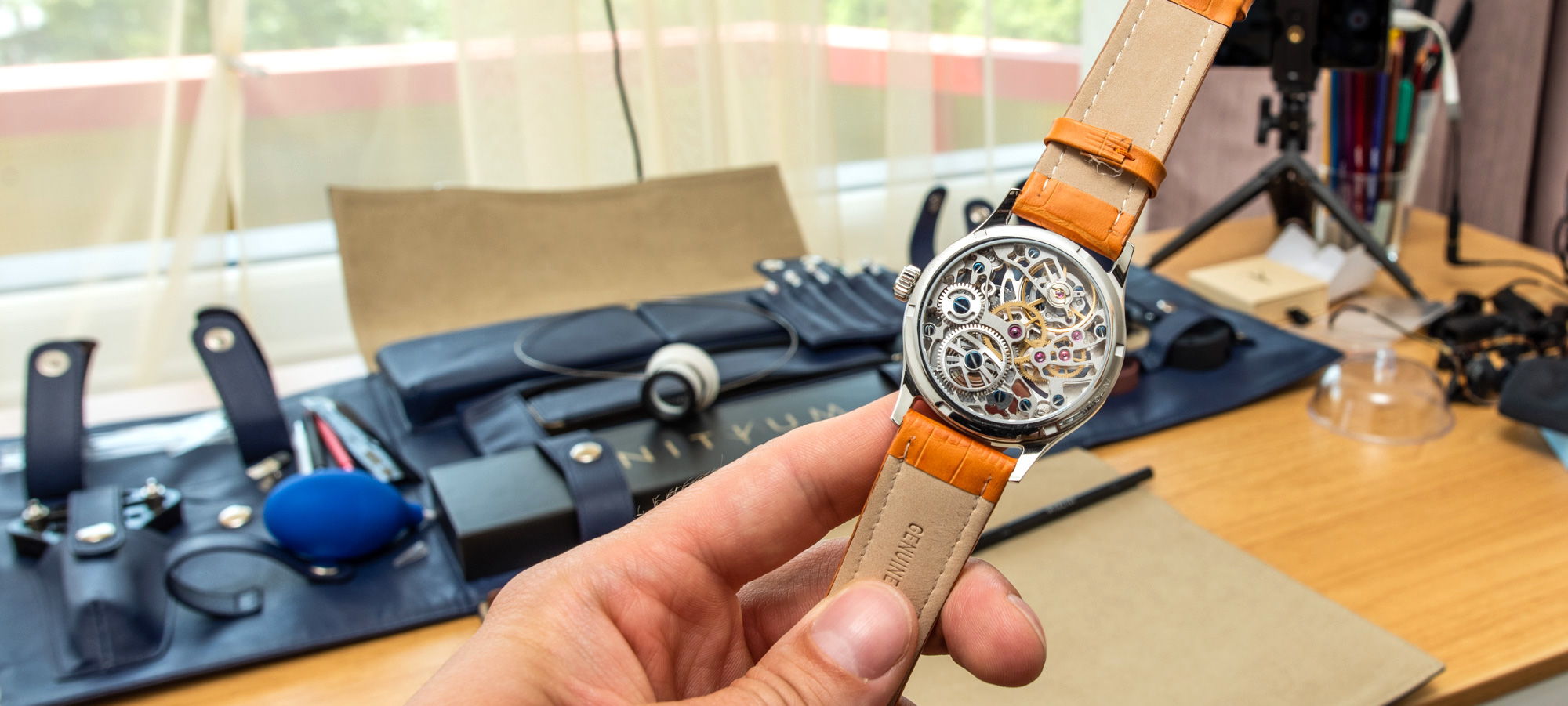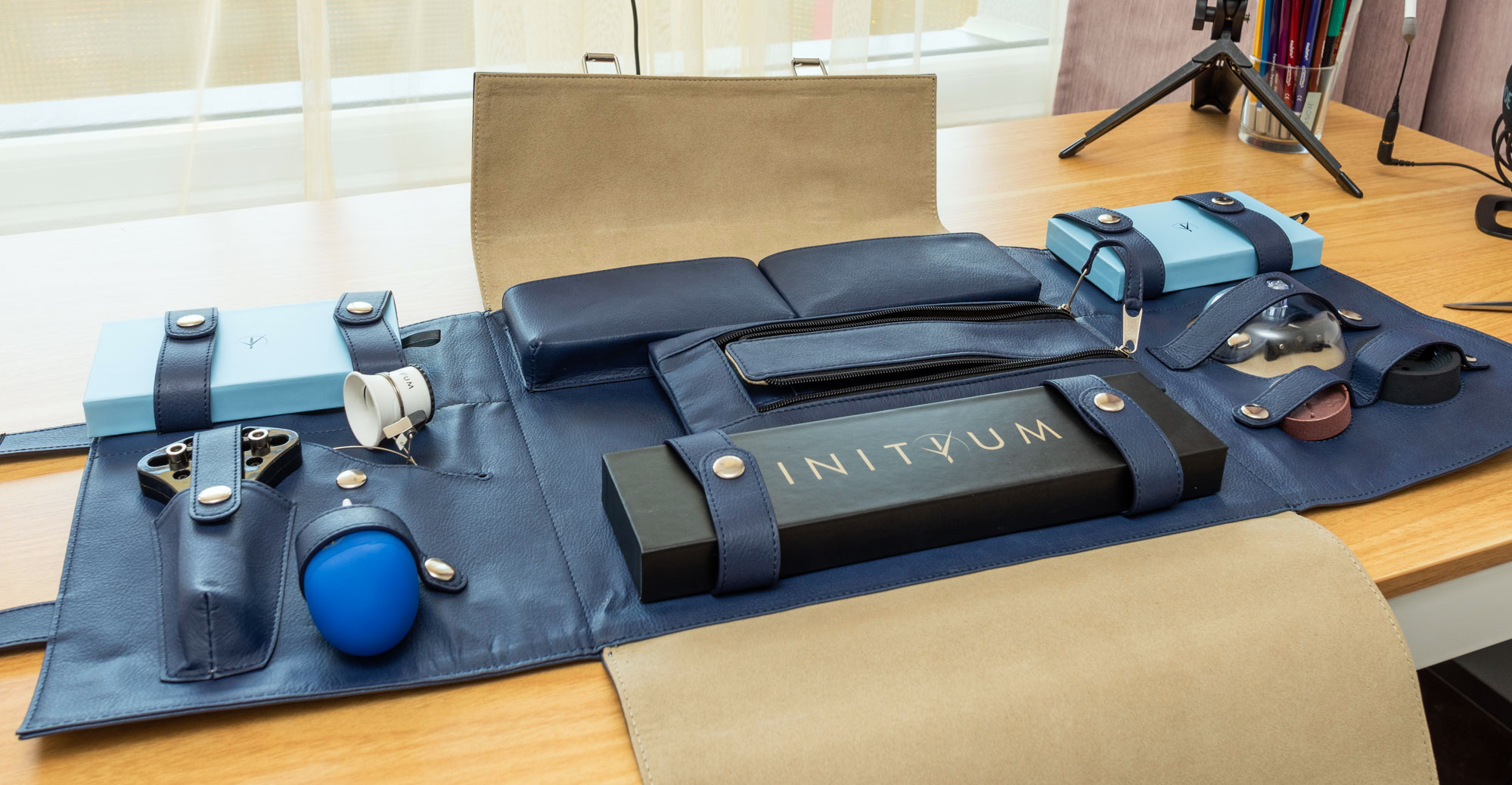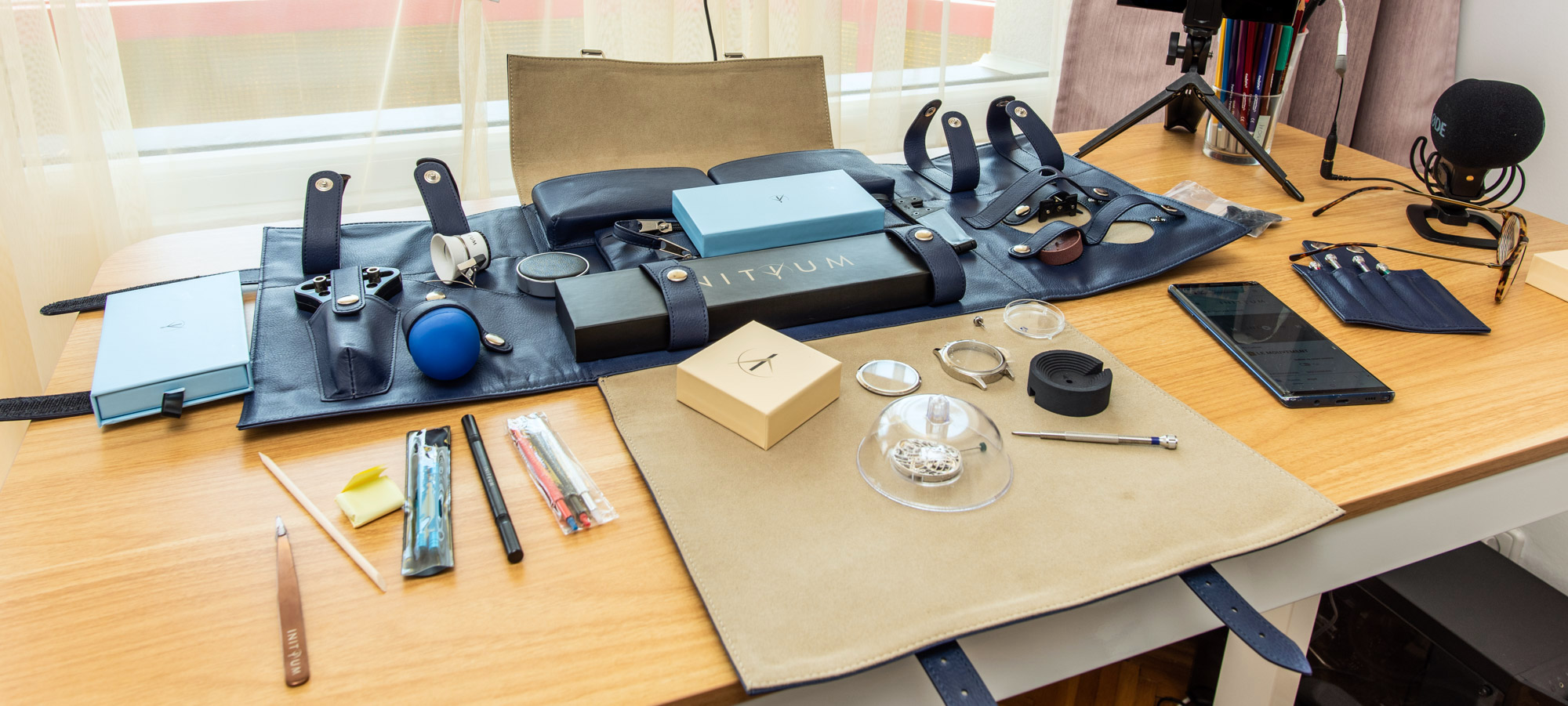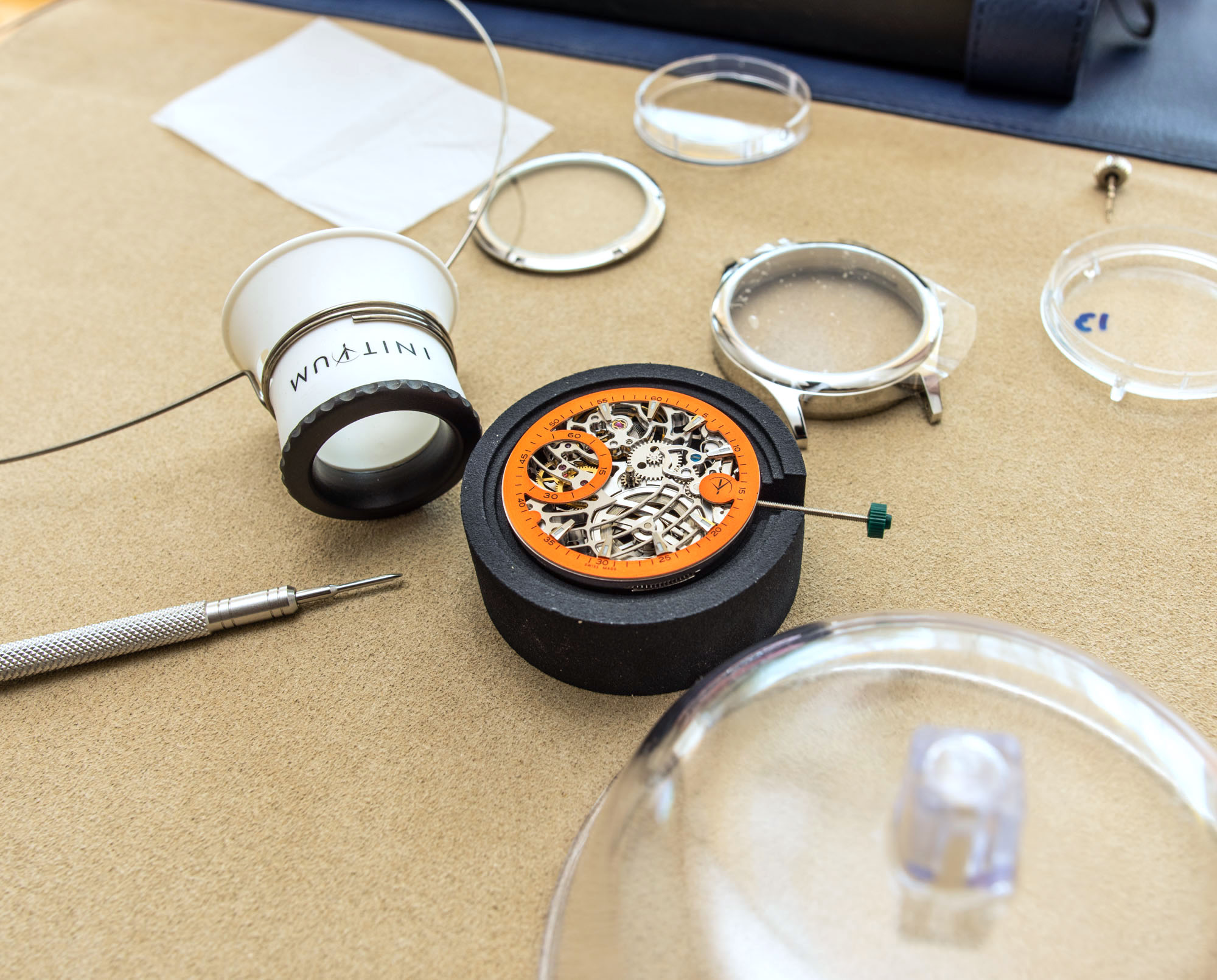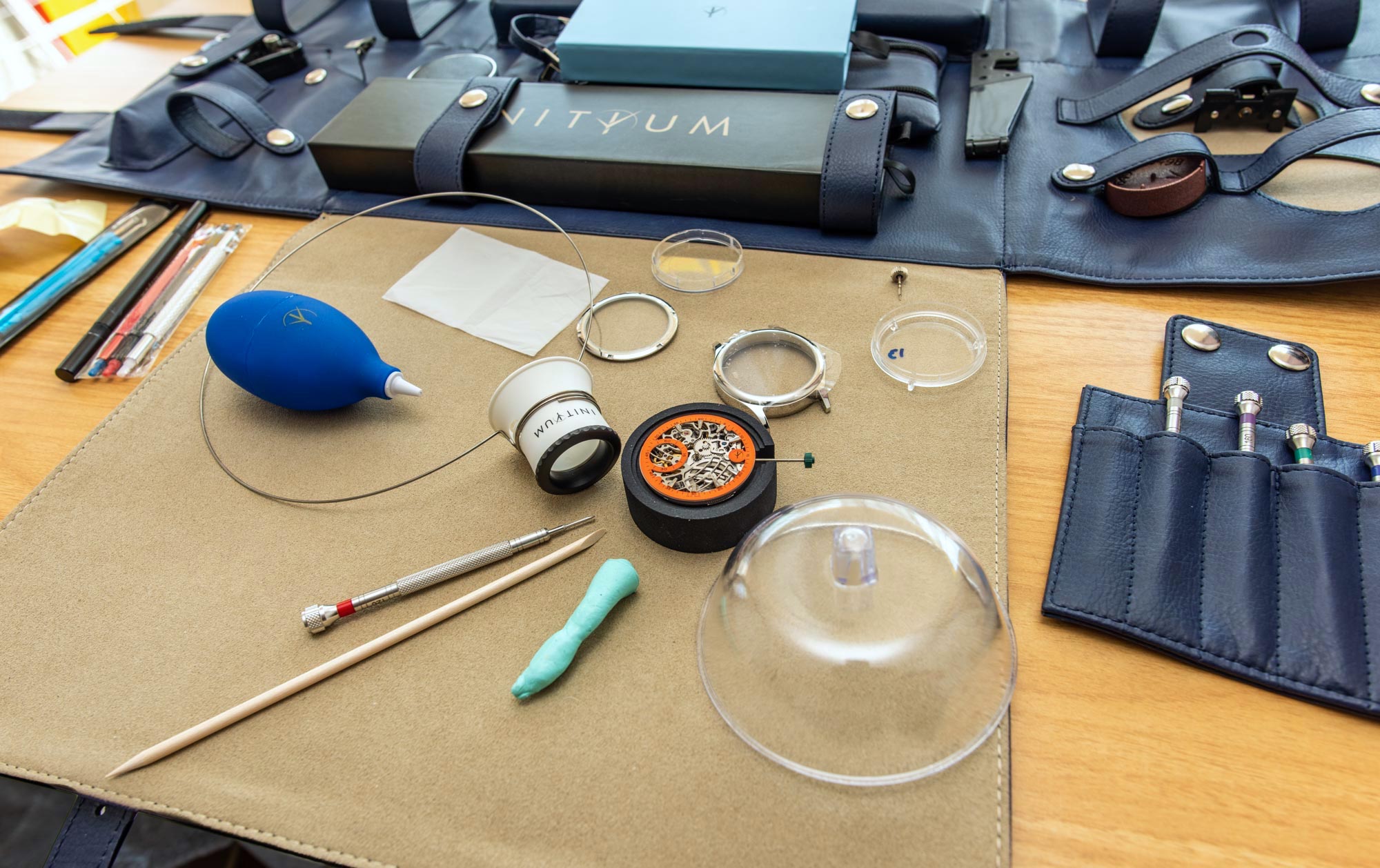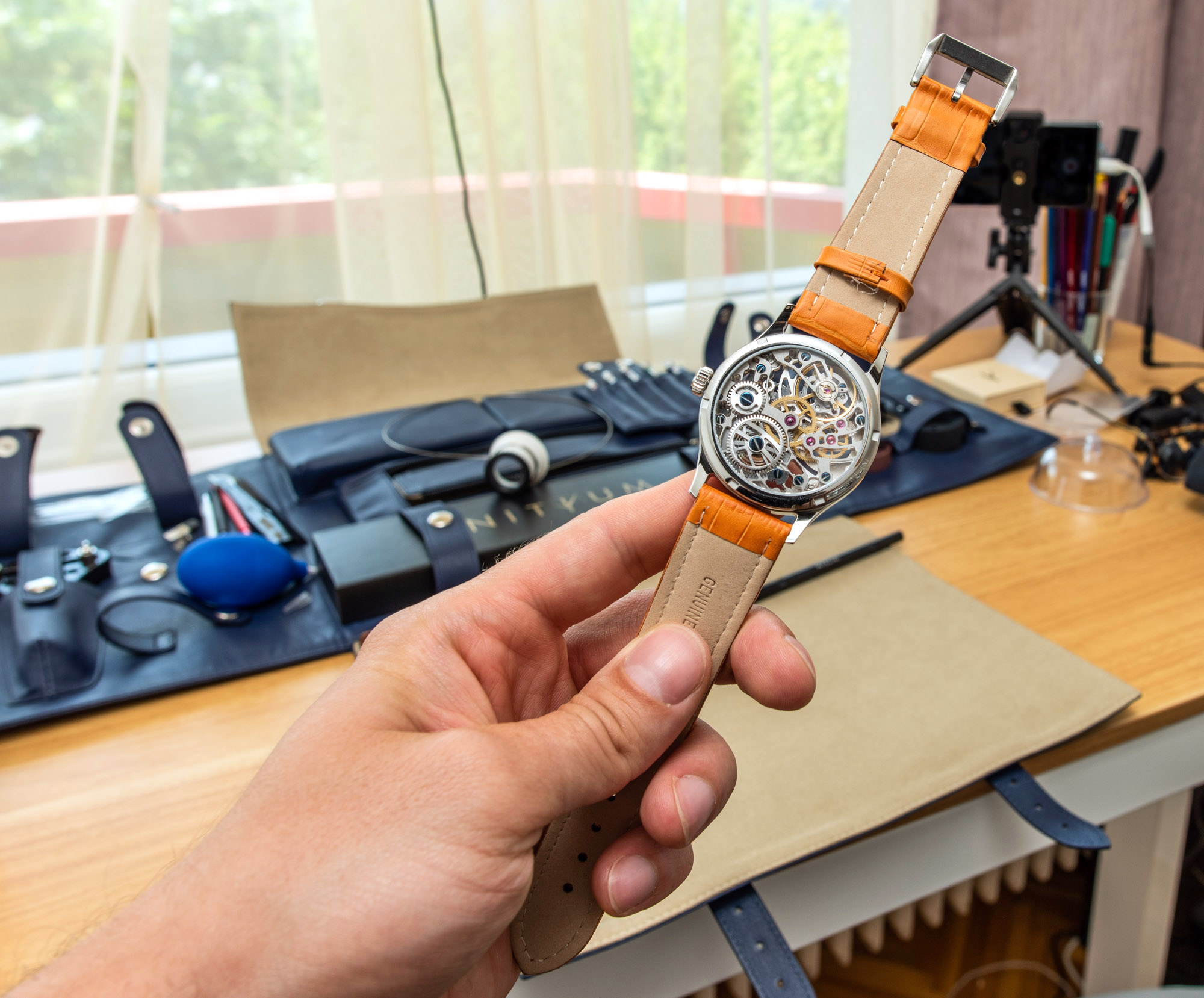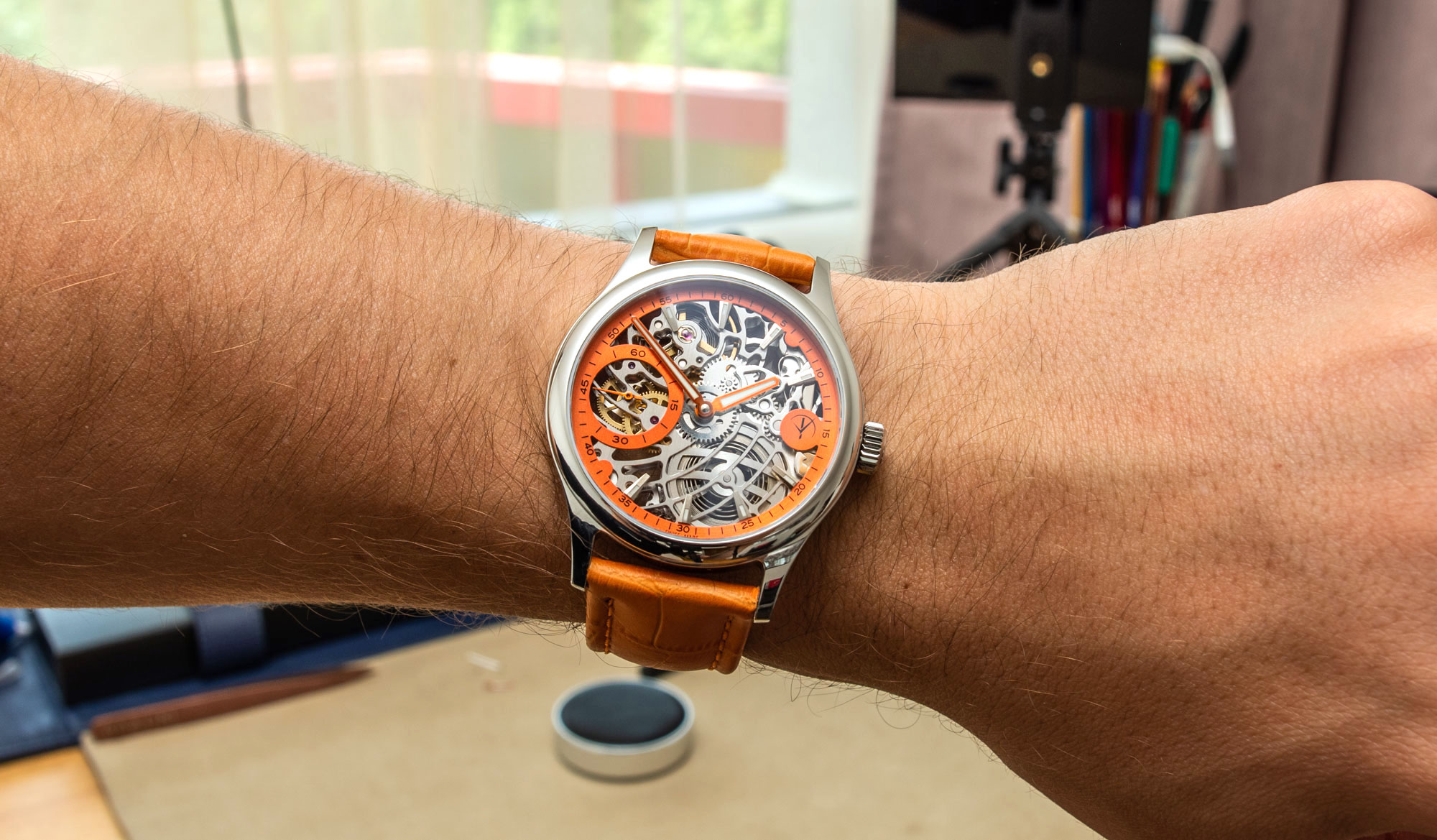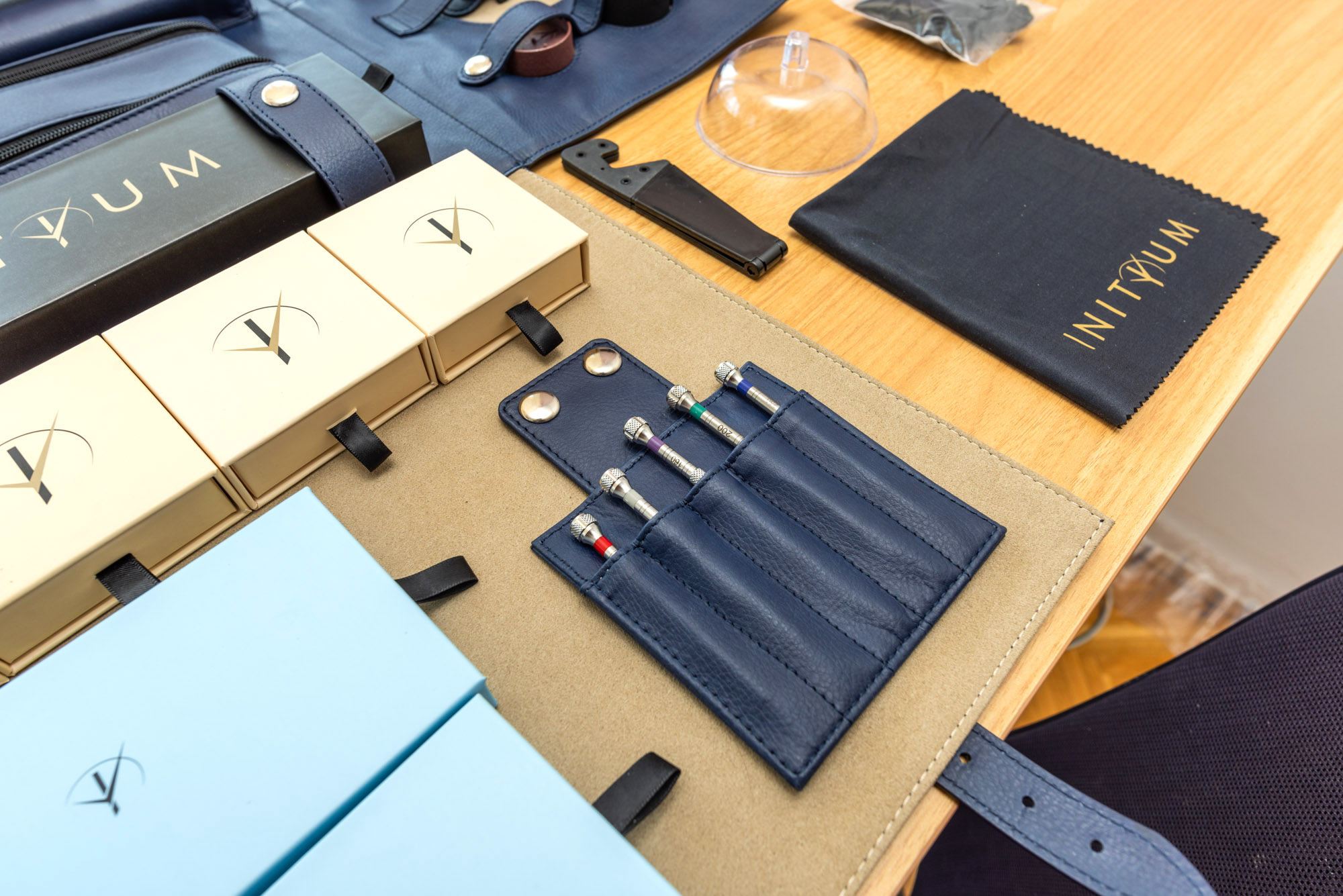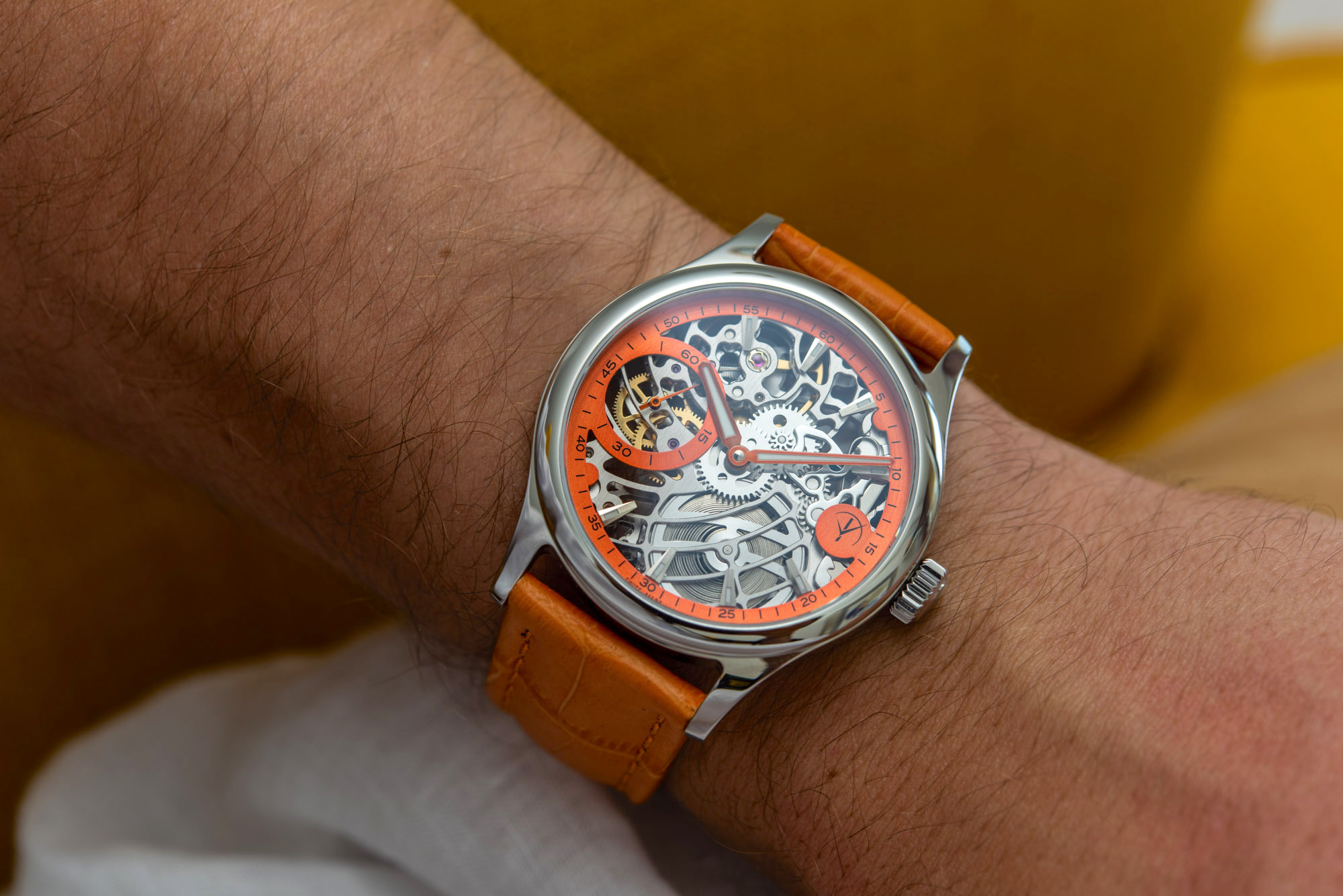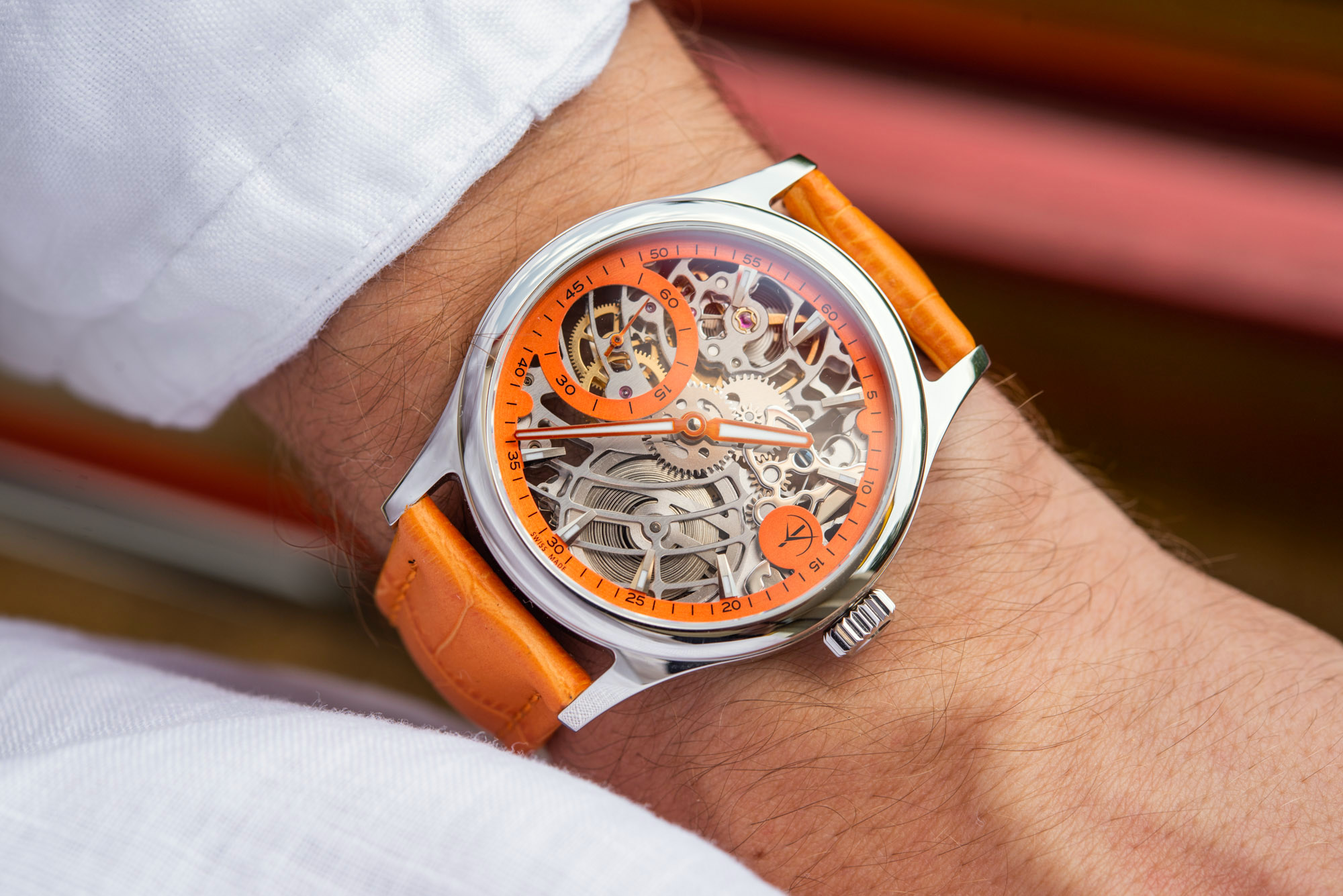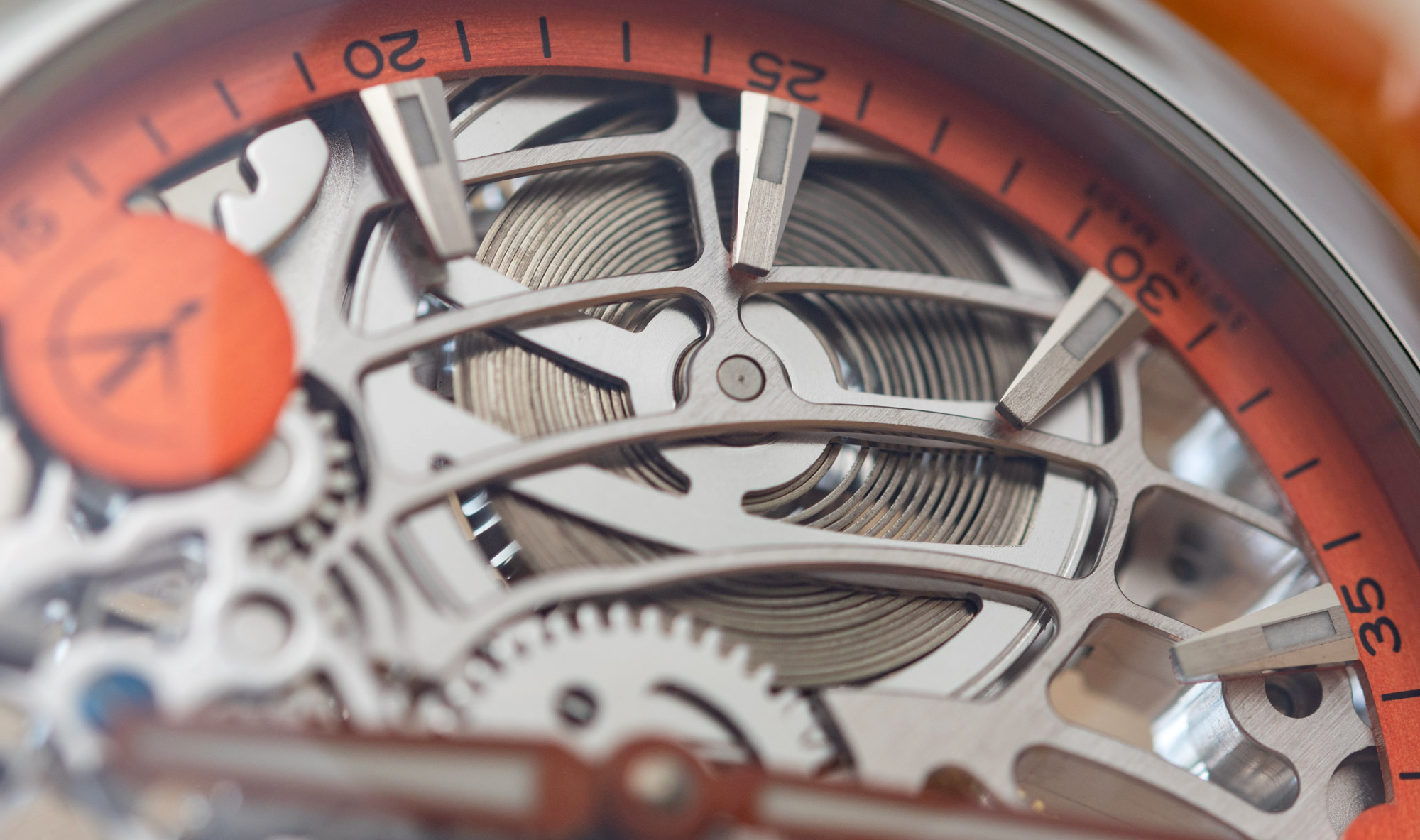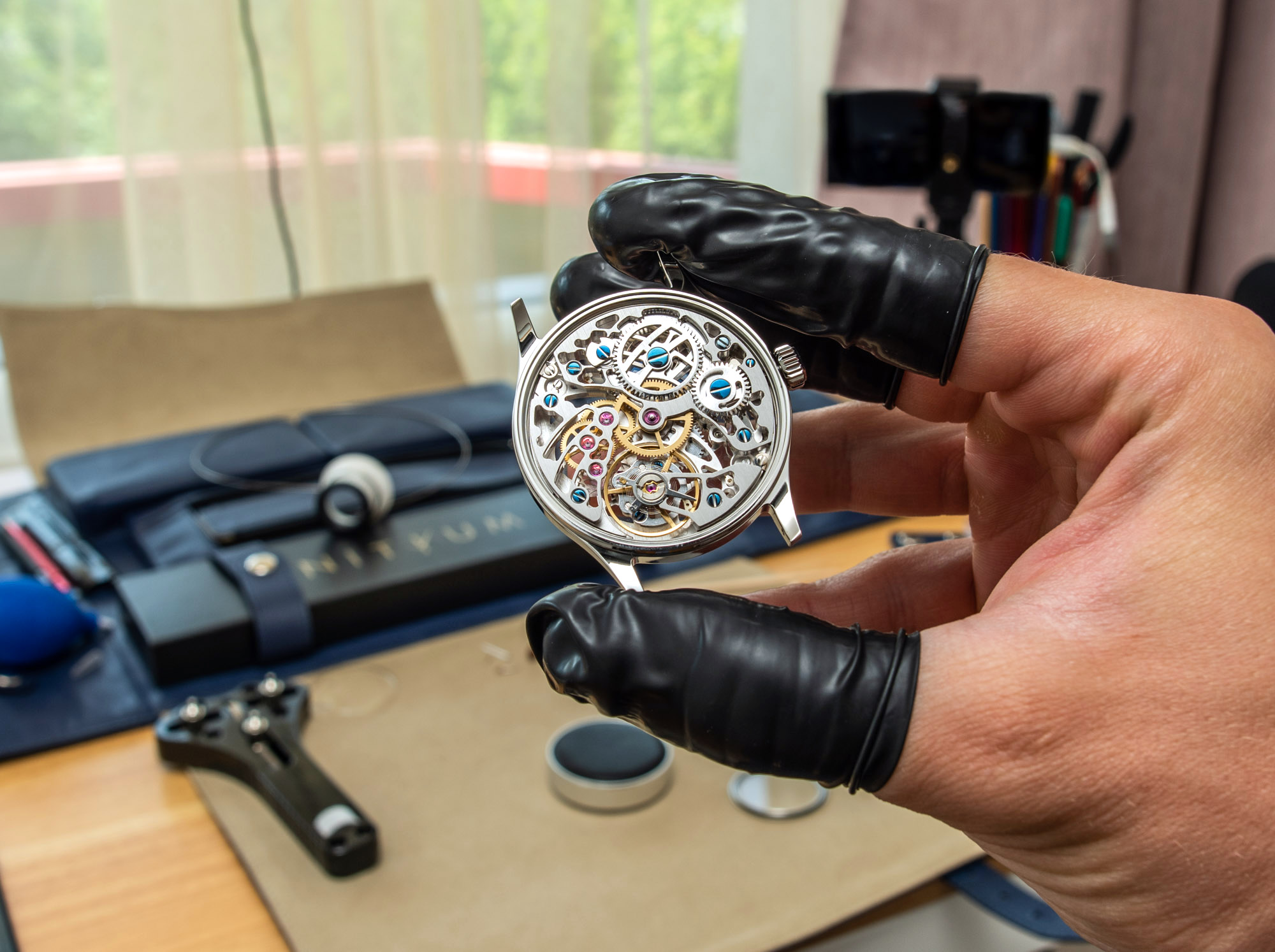
For centuries, watches have exemplified how special human-made objects can be. What’s more special, though? An object — a watch! — that one made oneself. The Initium Kairos watchmaking kit offers us not the opportunity to fully a make watch from the ground up (although that is also possible), but something rather more approachable: a watch we assemble ourselves. It is a very involved process that begins with configuring your own unique watch and ends with you turning that concept into reality using tweezers, screwdrivers, rodico, and potentially every last droplet of wannabe-watchmaker motivation left in your system. This is a review of the entire Initium watchmaking kit process from start to finish.
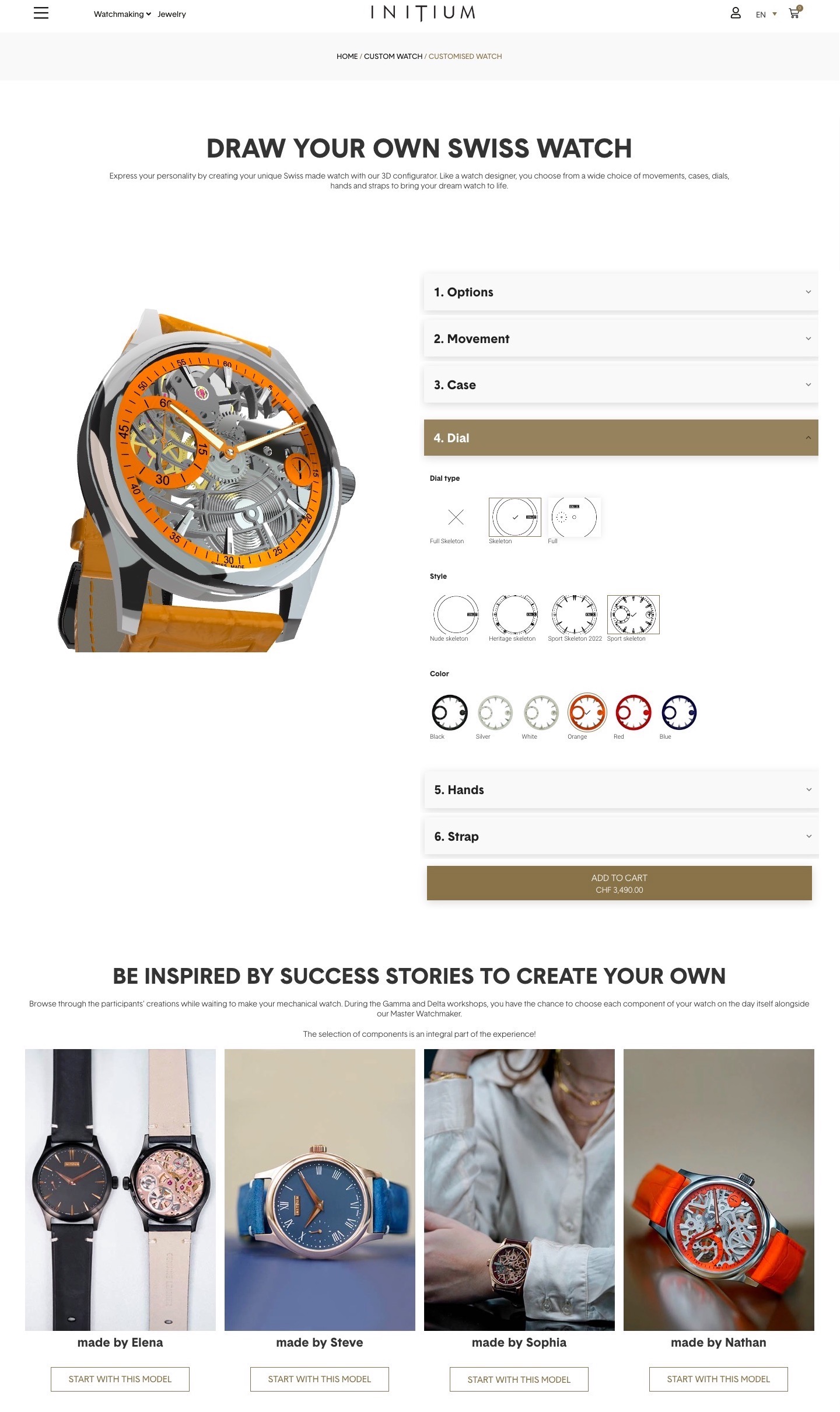
Configuring The Watch You Will Build
The process begins with visiting the company’s website and using the configurator to create a watch to your taste. Well, at least in theory, because, once you’ve familiarized yourself with the large variety of available options, you will probably want to go back and dedicate some time to looking at what previous Initium customers have created. The examples the site provides will likely prove to be helpful in narrowing down what your personal taste would consider the strongest dos and don’ts. From solid and restrained dials in classical, contemporary, or sporty styles all the way to heavily skeletonized movements and openworked dials, the watch you will receive can be an under-the-radar piece or, you know, it might be one with a blue-coated case with a pink-coated skeletonized movement inside and golden hands.
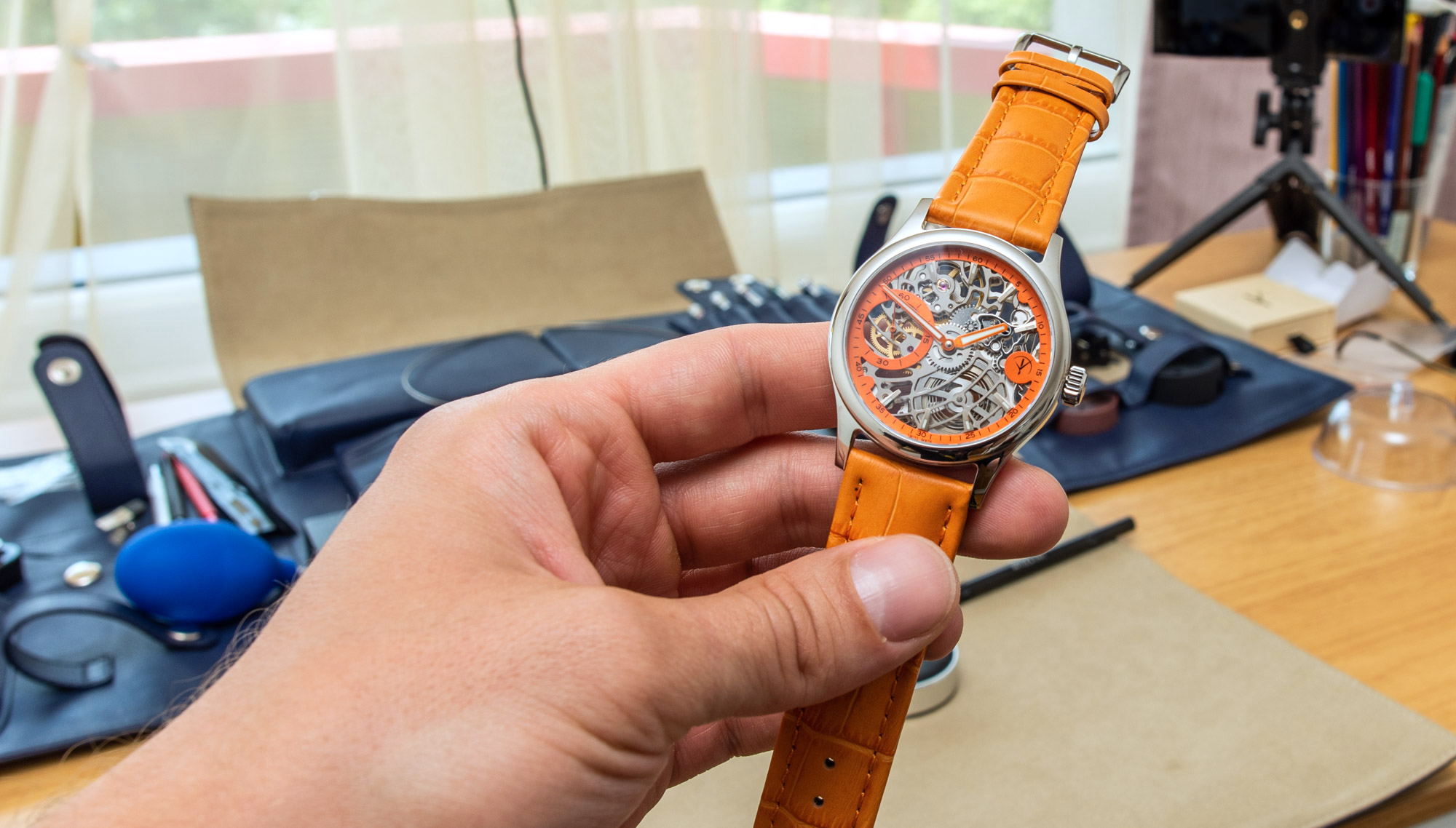
The number of color, finishing, and style options for the case, dial, hands, straps, bracelets and even the movement (the latter can be black, anthracite, pink, golden rose, golden yellow, or rhodium-plated, meaning all the bridges and plates) is hardly matched by others. There is well and truly is an abundance of options and a very high chance that your configured watch will be a unique piece. Initium, again, provides some good examples of how others have used the configurator to create tasteful and exciting watches but otherwise leaves us completely to ourselves to create something that we like. From restrained steel bracelet-equipped “business casual” watches to something as wonky as a 1996 Volkswagen Golf Harlequin (that actually was a factory-approved and produced car), the canvas is yours to create on. I’m almost inclined to go so far as to say there may actually be a few too many options.
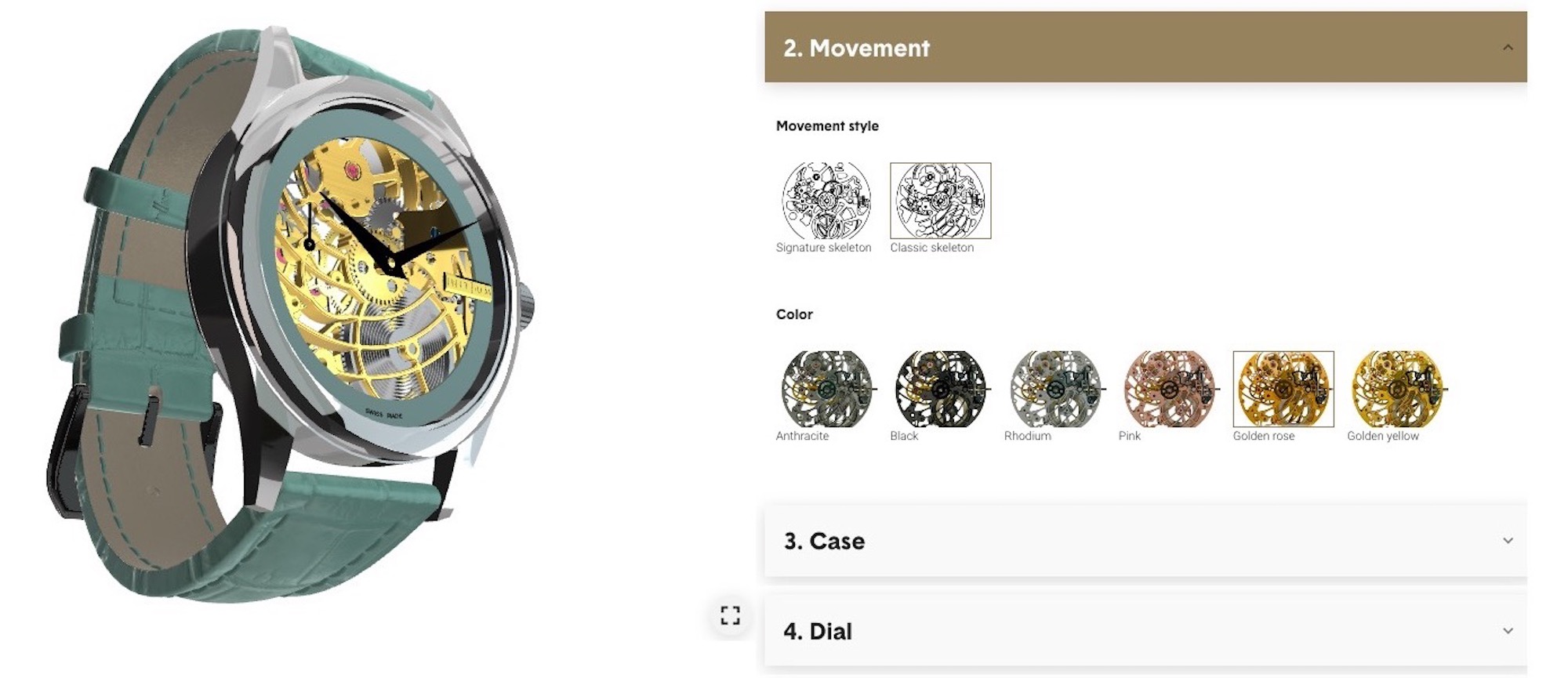
We will dissect the finished watch later, but for now, here is the watch I configured: I settled on the Classic Skeleton movement (the Signature Skeleton has an angular, modern style) in rhodium which is basically a silver tone. The 42mm-wide case is polished stainless steel, although I was very much tempted by the brushed pink, brushed blue, and brushed burgundy coated variants… The reason I chose neither of them and went with a seemingly more conservative polished steel becomes clear once we look at the dial. It is the Sport Skeleton style (one of four “Skeleton” dials on offer), and it is in orange. The “Sword” hands are also in orange, and an orange strap completes the picture. A colored case would have been a step or two too far. A shout-out goes to “Nathan” whose watch is featured on the configurator page as a source of inspiration — he chose the more modern Signature Skeleton movement, so our watches are very similar in style but also quite different. As much as I liked that, it would not have been right to create a duplicate of a fellow watch lover’s watch, especially when there are so many options to play with.
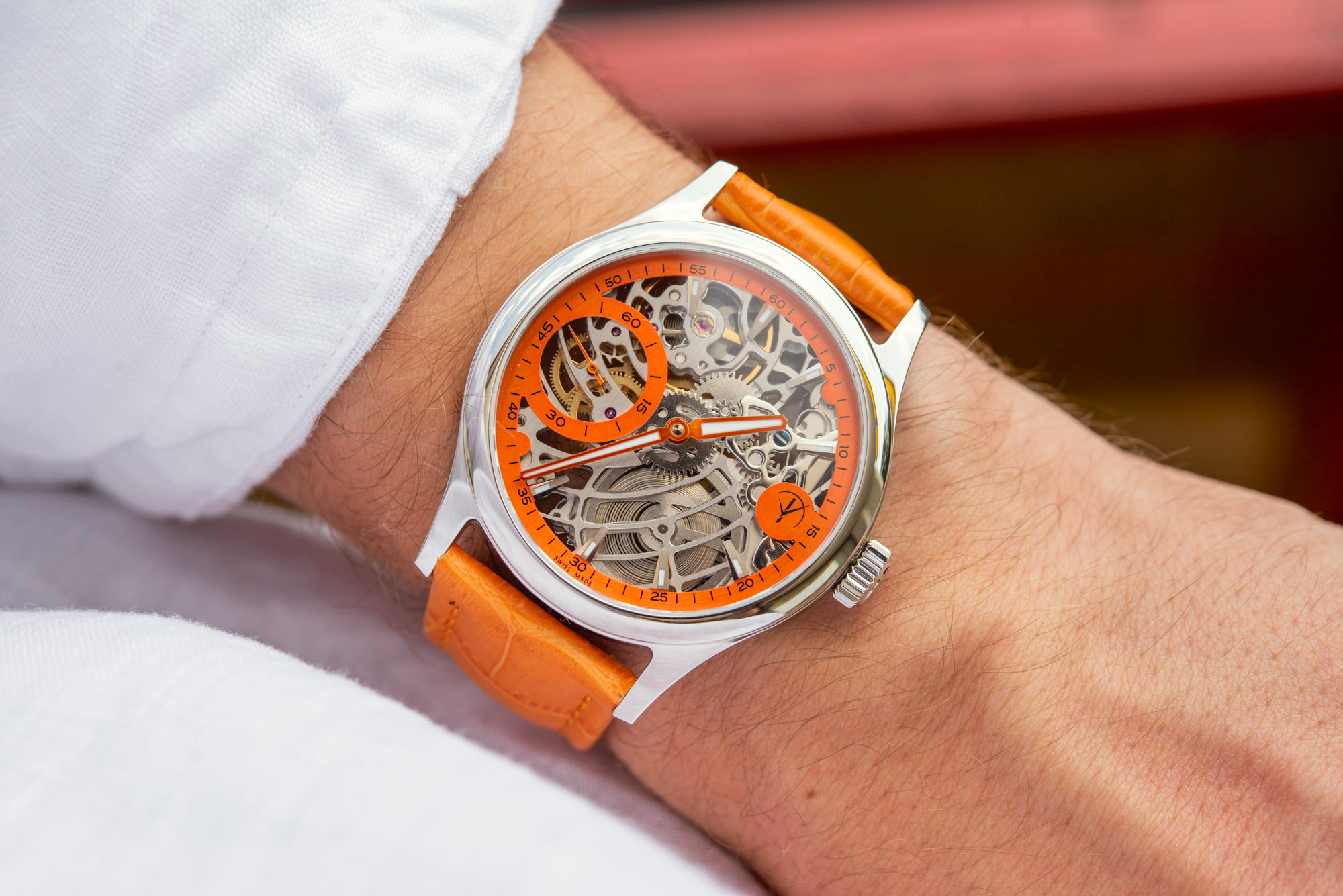
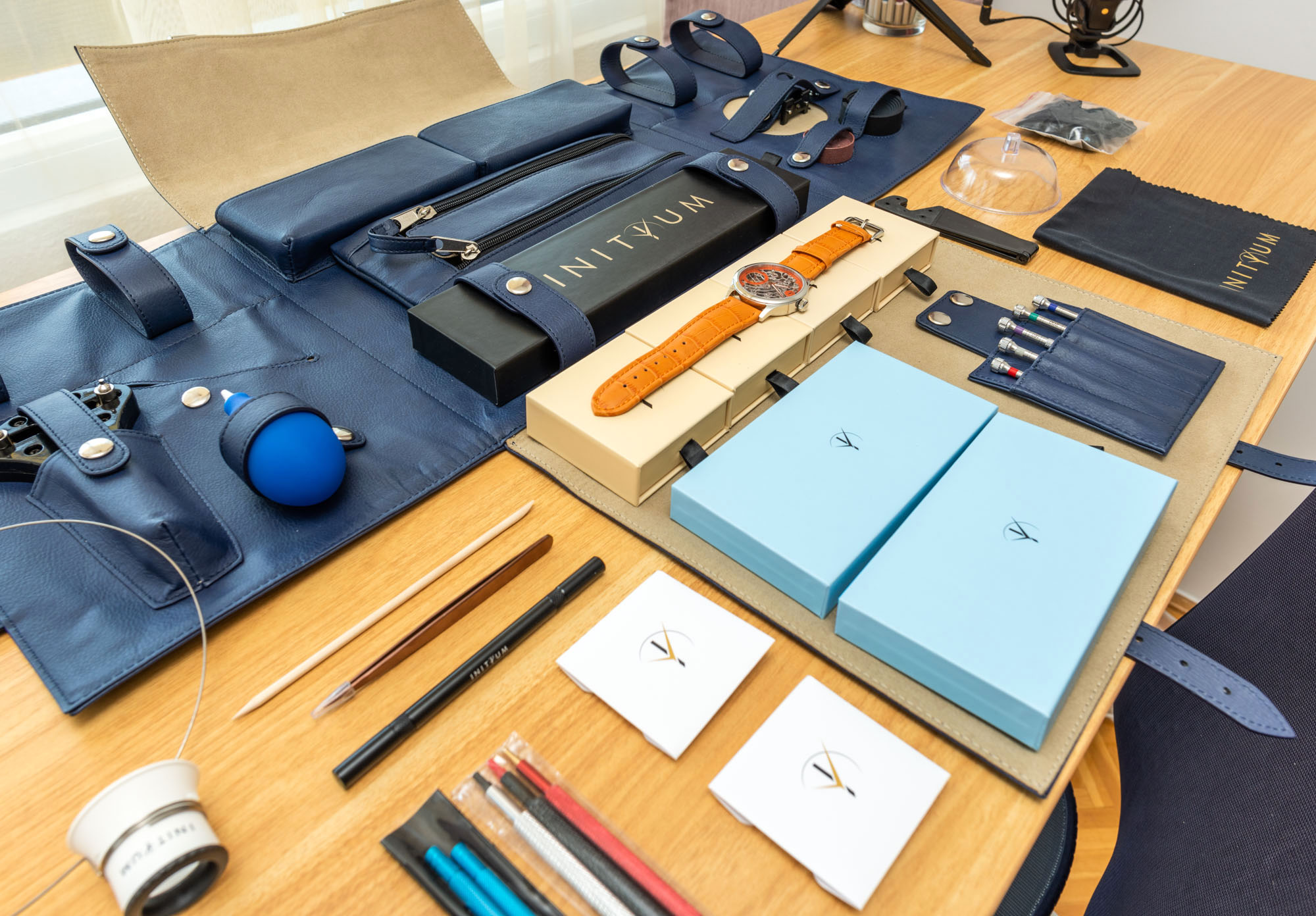
Getting Started With The Watchmaking Kit & Online Training Course
For 500 Swiss Francs over the price of the configured watch itself, Initium will send you a complete watchmaking tool kit — handy for all of those who don’t already have the necessary tools and/or have rather basic and cheap ones for quick strap changes and other simple tasks which they would rather not use to assemble a complete watch. The kit is presented in a bespoke vegan leather case in blue or black that folds out to reveal not just all the tools included, but also a suede working area that is large and supple enough to comfortably and safely work on. Although 500 Swiss Francs certainly is no small sum, anyone who’s ever shopped around for watch tools will know that high-quality watch items get really expensive really fast, and low-quality ones either don’t last longer than strap change or are unusable right out of the box. Over the years, I learned this the hard and expensive way, having thrown away the first cheap(er) tools I ordered online thinking they’d be suitable at least for the most basic tasks.

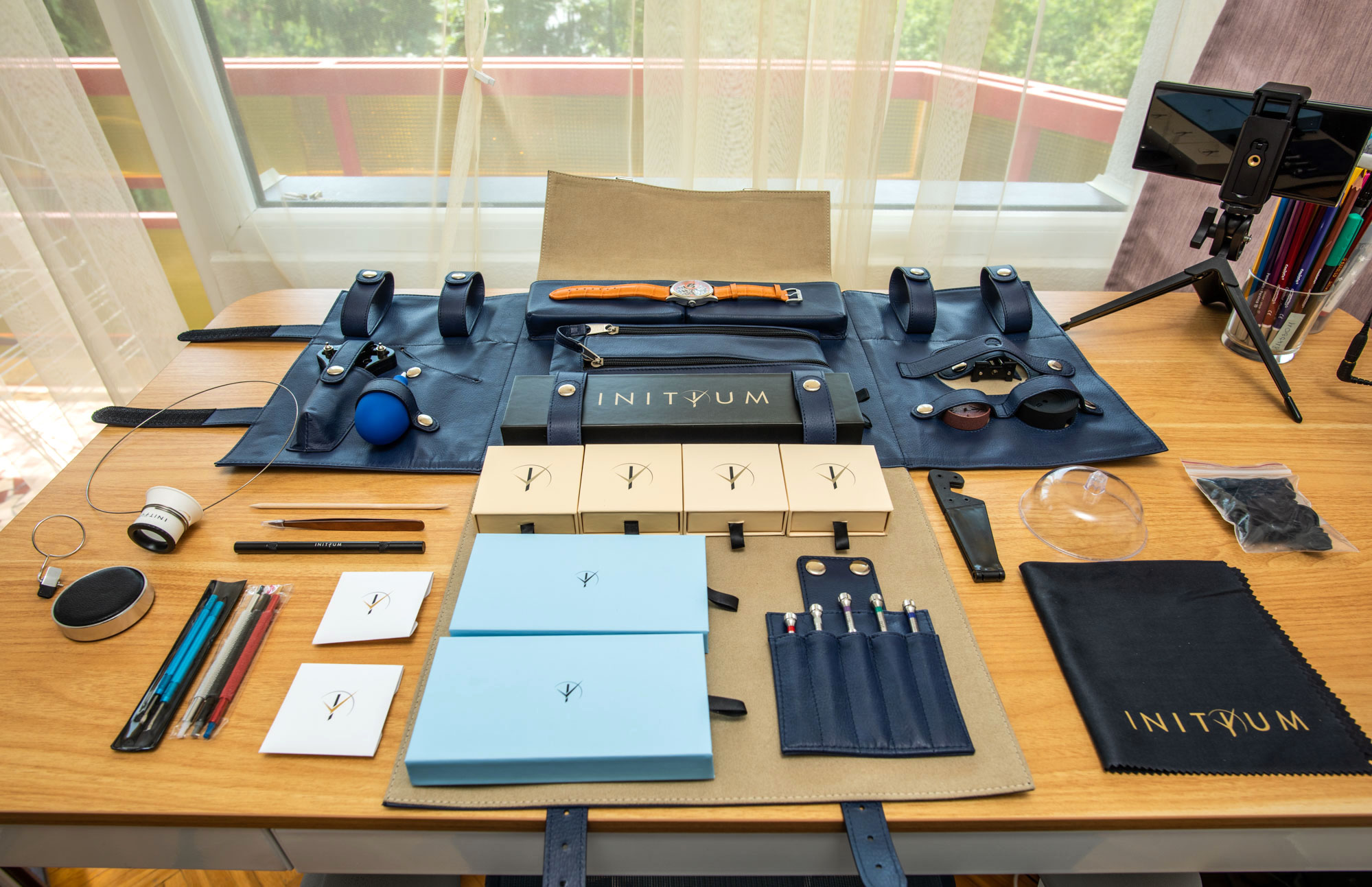
The first surprise comes not from the tools but the bag itself that is beautifully made, much nicer than the run-of-the-mill cardboard and plastic boxes the absolute majority of watches in this $3,000-$3,500 price range come with. It looks and feels as nice and expensive as bags that cost several hundred dollars — without a watch kit to be found in them. Everything you see in the picture above, including the watch case, dial, hands, and strap, were neatly contained within. The second pleasant surprise was the quality of the tools: The screwdrivers, tweezers, movement holders, and everything else is of a higher grade than I would have expected for the price. They were miles better than what I had sourced for myself over the years, save for the last set of screwdrivers that I bought at considerable expense to resize higher-end metal bracelets — and felt a lot like the tools I had used over the years at watchmaking exhibitions and courses that watch brands organized at their manufacture or events. This matters because using proper tools will play an important role for many in making them feel like a proper watchmaker while building their own timepiece — it certainly worked that way for me.
This matters because using proper tools will play an important role for many in making them feel like a proper watchmaker while building their own timepiece — it certainly worked that way for me.
Complementing the toolkit is Initium’s bespoke watchmaking e-learning website that one gains access to using the unique code that is found on the “Thank you” letter, the first thing one sees when opening the package. Embedded above is an example (the example Initium made public in French, the entire course is also available in English) from the total of the roughly 14 videos that will walk you through the build process. It is clear that Initium has put a lot of effort into this course. It is professionally recorded and is beautifully presented by a watchmaker at a pace and in a way that complete novices will also be able to understand and follow.
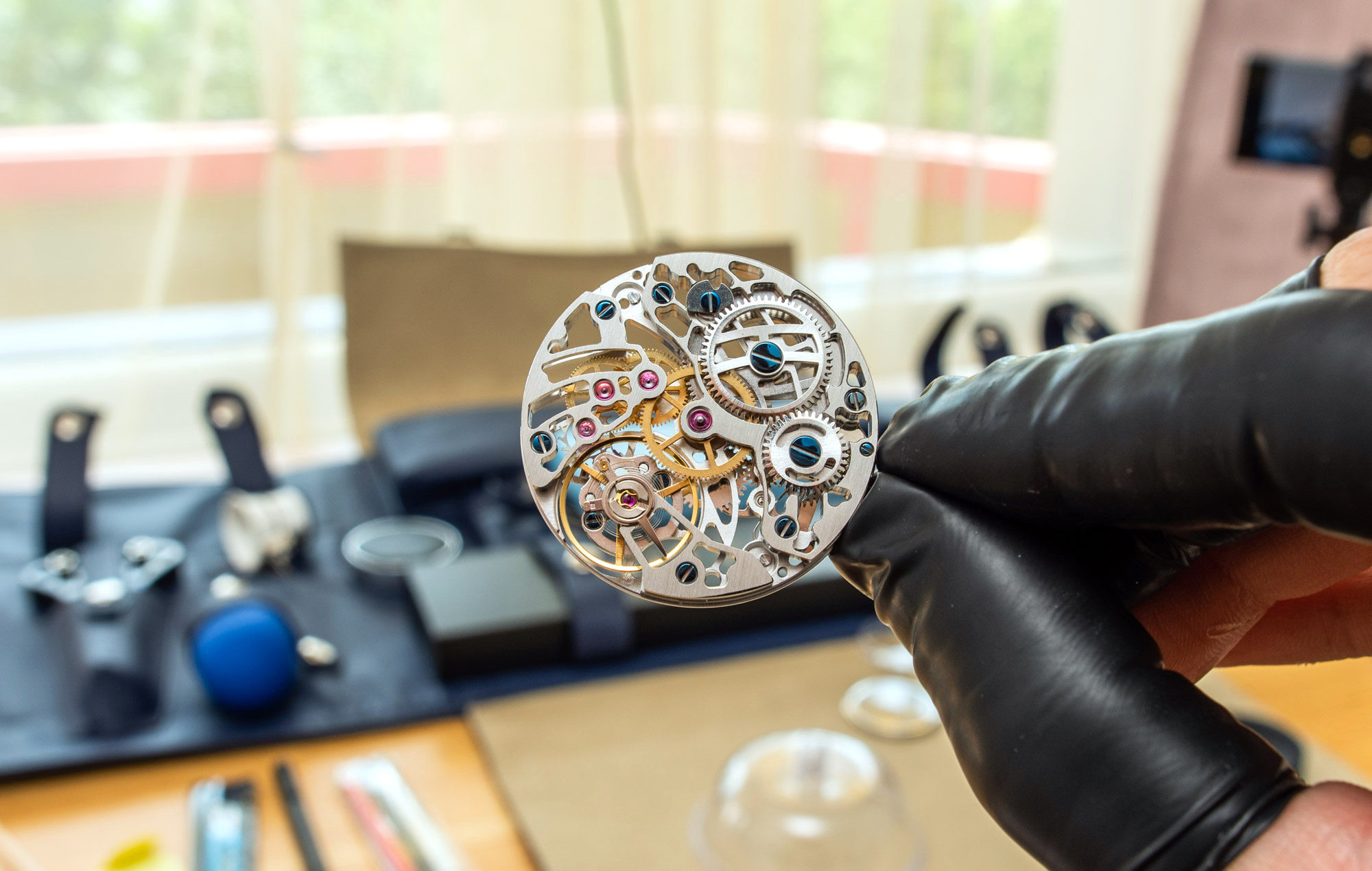
This, again, represents a considerable part of the appeal and value of the Initium Kairos watch and watchmaking kit. It well and truly is like sitting face-to-face with a master watchmaker in one-on-one training. We have our own tools, the exact same as he’s using on the video, we can listen as many times as required, and we can take as long as we need. The videos are embedded on YouTube (their privacy settings don’t allow them to be found or viewed without the aforementioned access code) so they are easy to view on virtually any device. No skill in the course is taken for granted: We are guided through the very basics, including the watchmaker showing us how to determine which one is our dominant eye so that we can wear the loupe on the correct eye and make correct inputs from the beginning.
No skill in the course is taken for granted: We are guided through the very basics, including the watchmaker showing us how to determine which one is our dominant eye so that we can wear the loupe on the correct eye and make correct inputs from the beginning.
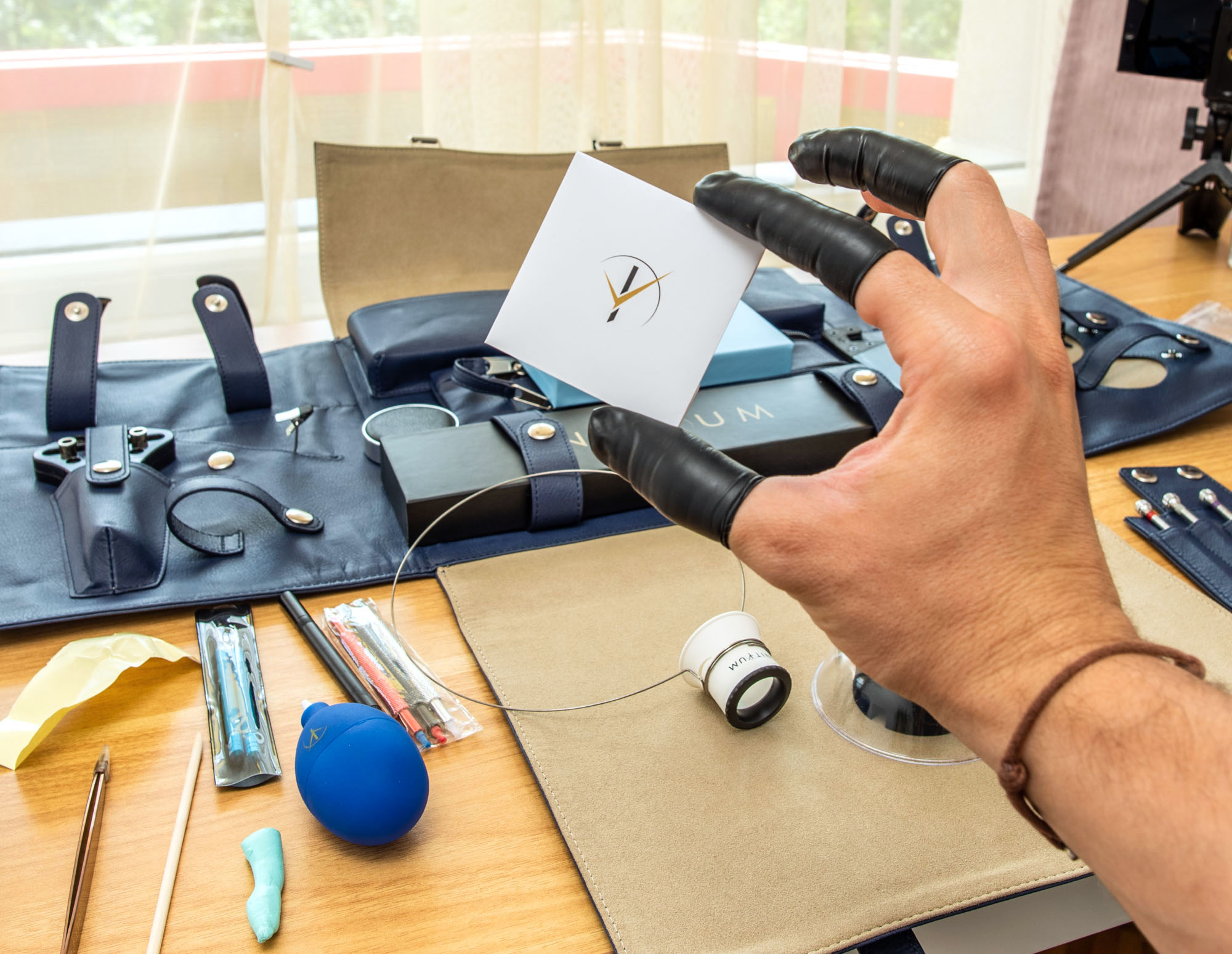
This little pouch holds the hands of the watch. The rather hilarious black finger condoms are also included in the kit because yes, this is what you’d find people wear at the benches of high-end manufactures, too.
Having had dozens of opportunities over the years to sit through similar courses with watchmakers in manufactures and at events, I can say that the video course comes remarkably close to an in-person experience — only in this case, it isn’t awkward to re-watch the watchmaker make the same move or technique for the fifth or the tenth time before we come close to getting it right. While YouTube has plenty of watchmaking content that one could reference when using a cheaper DIY watchmaking kit, the way the tools and tasks align with the course and the professionalism with which they are all presented makes this a considerably different experience. You’ll spend plenty of time hunting for tiny components that fly all over the place — digging up YouTube for a video that offered a kinda-sorta solution to the problem you are facing during a DIY assembly won’t add anything to the fun or the immersion of the experience.
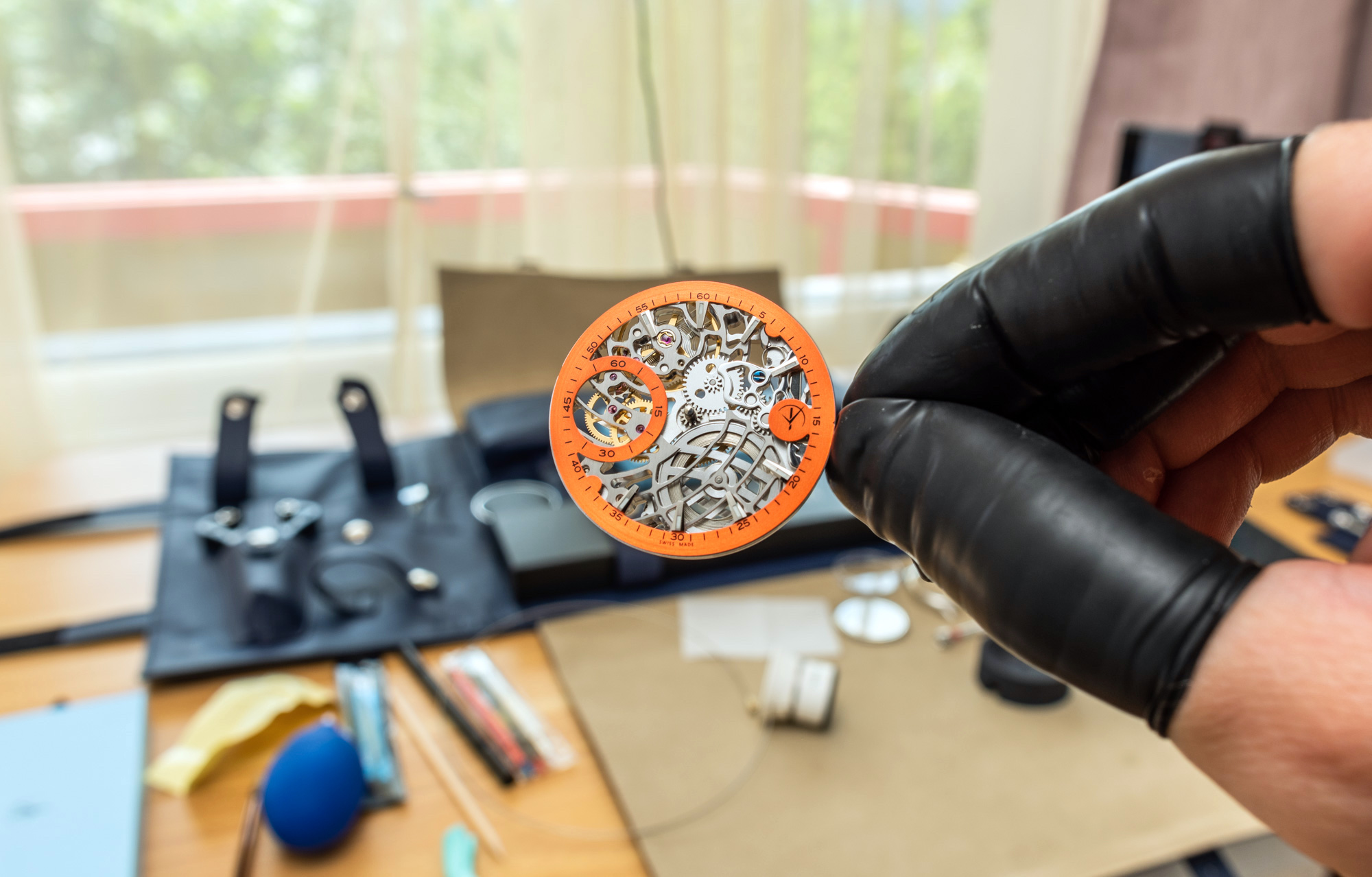
The dial, now installed and cleaned. If you are obsessed with spotless dials, hands, movements, and crystals, now is your time to prove.
What is interesting is how seemingly limited and simple the assembly process is and yet how involving, fun, and potentially expandable it is nevertheless. The kit includes the following components in separate compartments: Case with bezel and sapphire crystal installed; caseback with sapphire crystal and O-ring seal installed; crown; skeletonized 6497-architecture movement completely assembled (more on this in a bit); openworked dial; two full sets of hands (hours, minutes, seconds, two of each); straps. Our job here is to install the dial by carefully aligning it, flipping the movement, and using two eccentric screws to secure the dial’s feet to the movement; install the three hands with the proper tools; install the movement in the case using small screws and tabs; install the crown and secure it using the designated screw; install the caseback with the designated tool; and install the straps. The processes also include carefully removing the components from their compartments, inspecting them, and, if necessary, cleaning them.
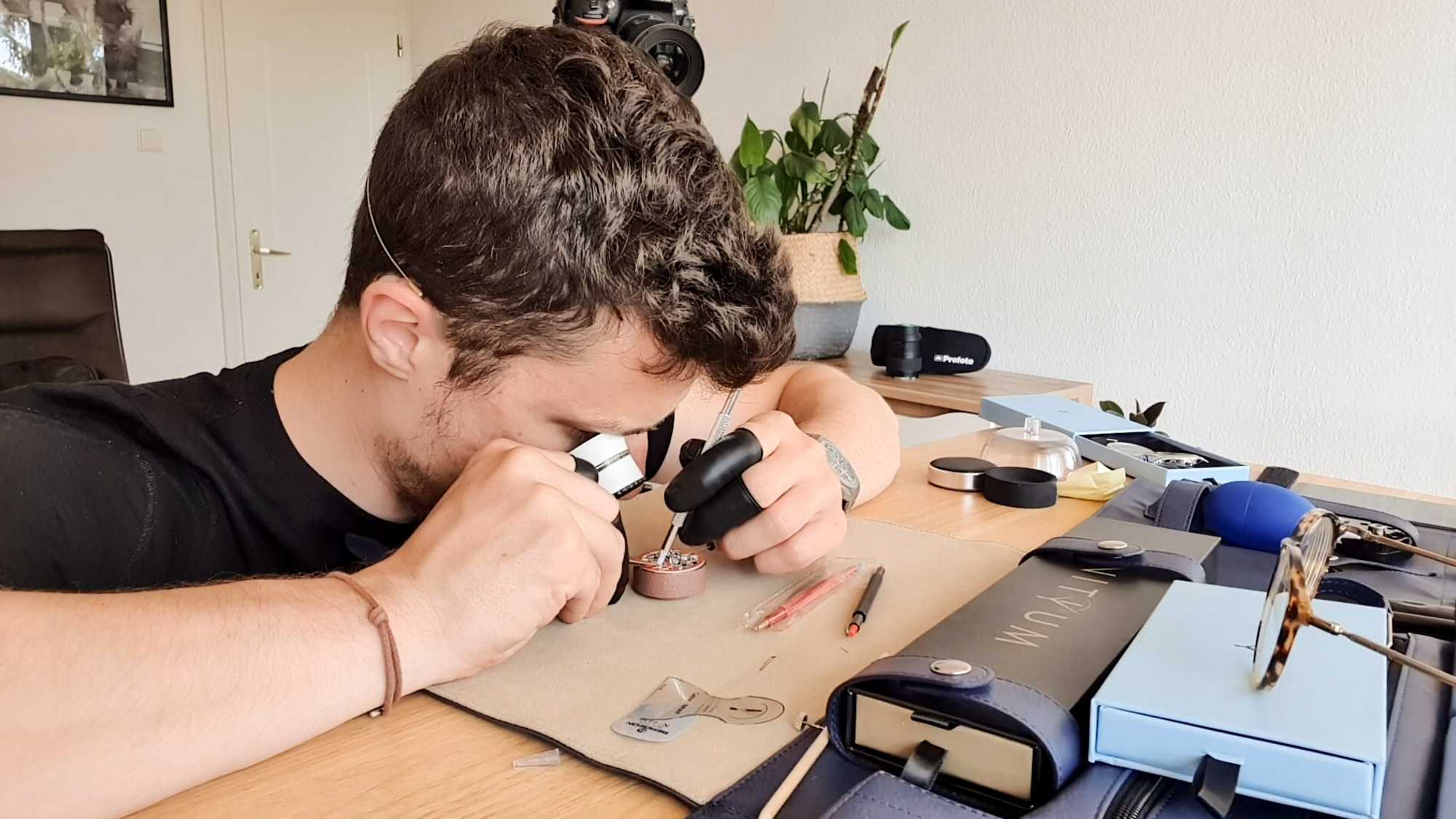
I’ll own up to having spent around 40 minutes trying to install just the subsidiary seconds hand alone. It’s a good thing Initium adds two of each hand, so there’s room for error.
For a trained watchmaker to perform this entire procedure on such a rather straightforward setup like this movement and case would probably take no more than 15 to 20 minutes (and if it were a timed race, I’m sure it could be done faster still). For a newbie with little to no experience to work at this minuscule scale, watching all the instruction videos, and implementing all that you learned will likely take several hours, I’d go so far as to say two full afternoons. Again, this is not a rush, nor a race. The Initium Kairos watchmaking kit is an invitation to discover what it is like to work on a watch and a genuinely nice and detailed one at that. This kit is not for those who want to hurry or learn while butchering watches. For them, I’d recommend buying some cheap tools (I’d still rather get this entire kit) and some dirt cheap old mechanical watches from eBay or their local watch repair shop and “experiment” on those. This, however, is not to say that you can’t be a total newbie before getting this kit, because you absolutely can be.
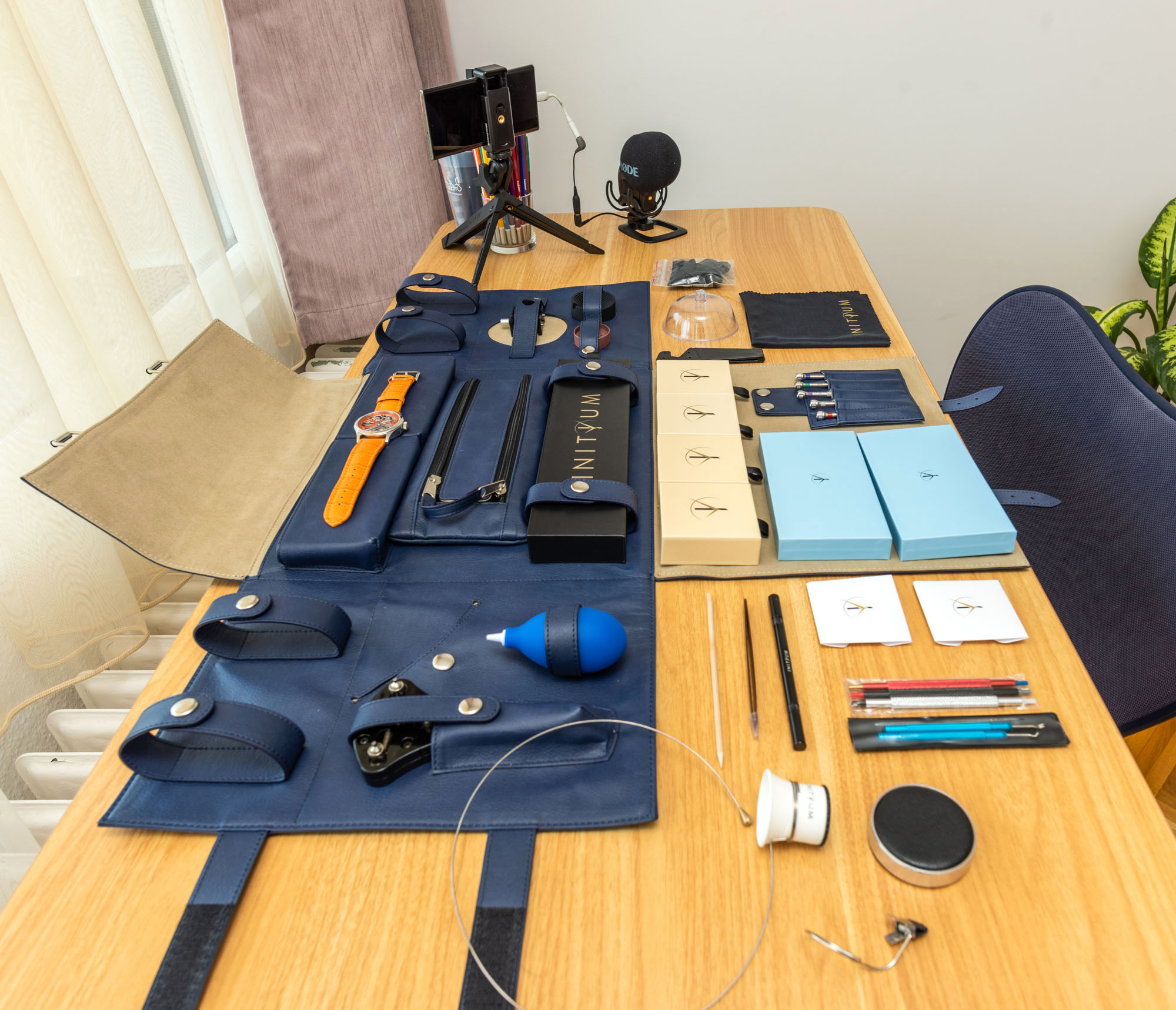
With a healthy dose of patience and minimal dexterity, you’ll soon discover how satisfying it can be to develop an eye for where an eccentric screw (that looked like any other round screw a moment ago) is facing before you turn it to the perfect spot to secure your precious dial or to pick up a tiny screw using proper watchmaker’s tweezers and set in the narrow crevice between two bridges to hold a tiny tab in between case and movement. How much nicer it is to do this properly, using proper tools, on a proper watch, can’t be overstated when comparing this experience to a fully DIY approach — at least for me, and some others, it will certainly be that way.
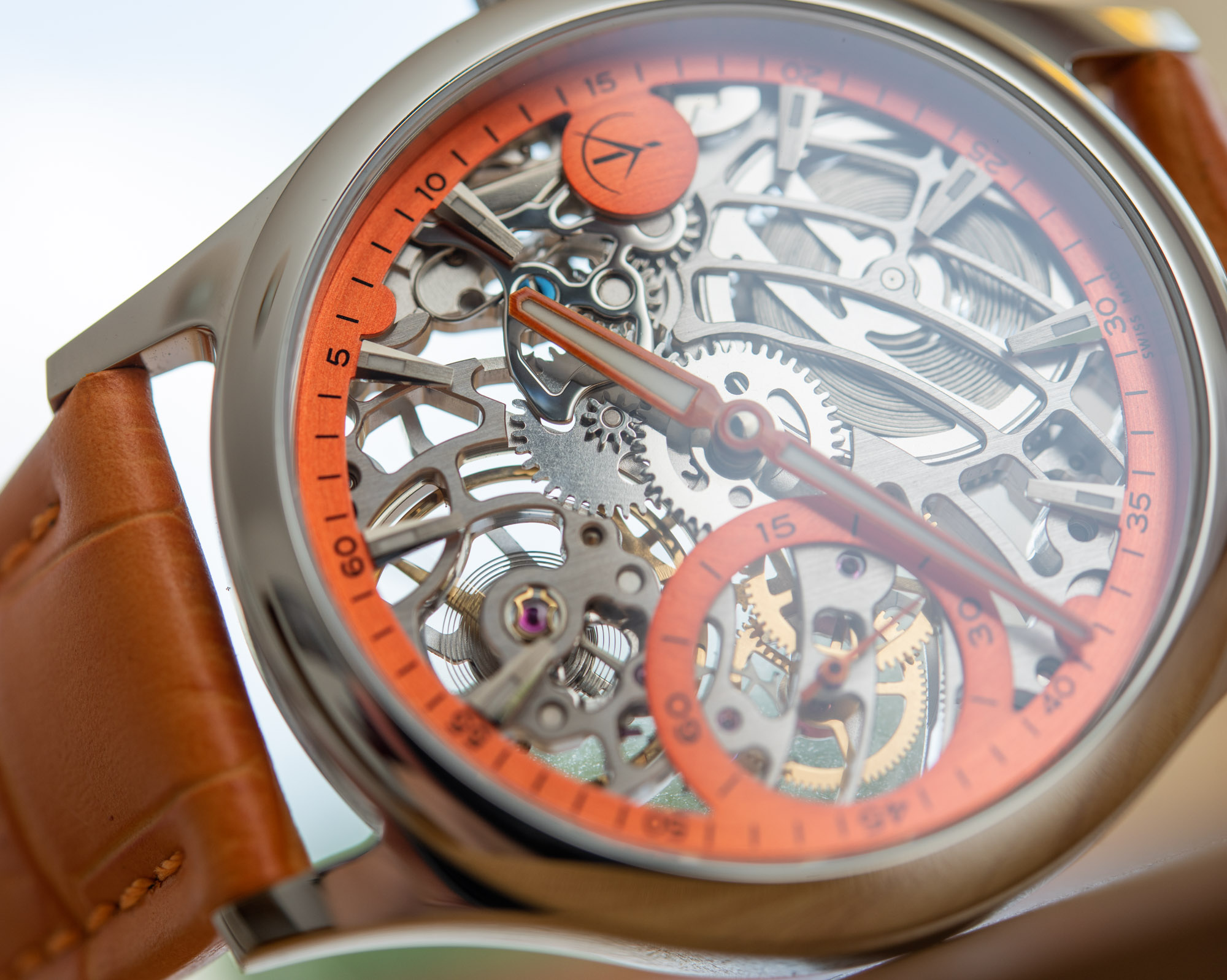
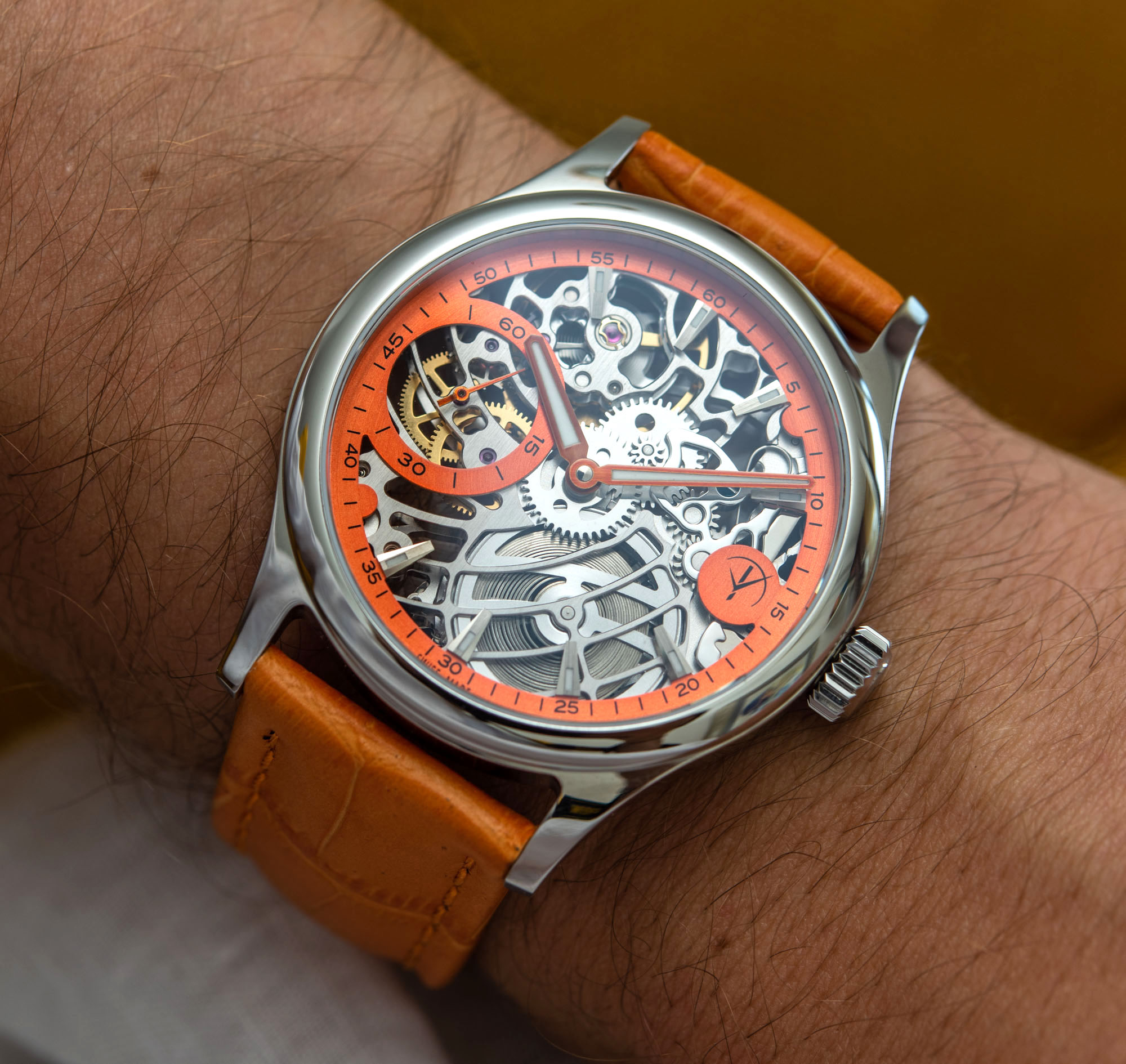
Reviewing The Completed Watch
We could say a watch comparable to the Initium Kairos is the Tissot T-Complication Squelette, a watch that today costs $2,045. Both the Kairos and the T-Complication Squelette feature an openworked movement with the same 6497 architecture. The latter matches a more complex-looking case to a considerably more simple movement. In other words, the Tissot operates with cheap-looking, flat, stamped plates and rather crude bridges while the Kairos is among the better-finished movements in the $3,000 range. Having seen my fair share of tragically poorly finished 6497 calibers that look impressive from afar and just terrible up close, I had my reservations when configuring the Kairos with this movement. Well, the reality is that the Tissot has absolutely nothing on this one as far as movement execution is concerned, and, again, neither do so many other watches in this price range.
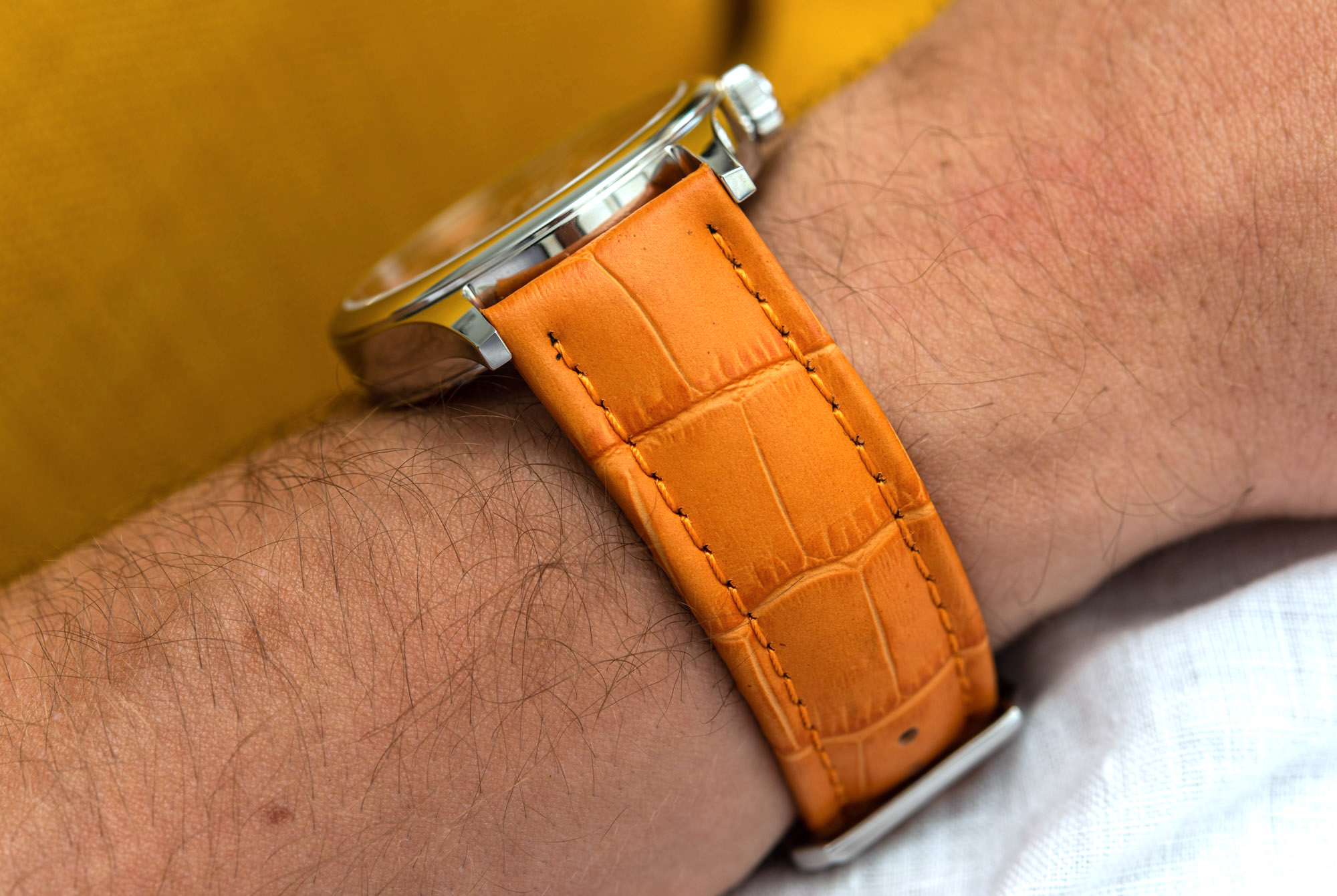
The case, by contrast, is as simple as it gets, especially in this all-polished version. The lug structure, bezel, and caseback, all are as basic as they can get but at least the case itself is also Swiss-made. One bit of seldom discussed trivia I picked up and have confirmed during my case and watch manufacture visits is that watch dials can say Swiss Made if the watch complies with the (in theory strict, in actual practice rather weak) Swiss Made legislation requirements, a case (or caseback), however, can only be labeled as Swiss Made if the case itself was also made in Switzerland. Watches that say Swiss Made on the dial may absolutely have a Swiss-made case, but in reality, that is not always the case. A watch with Swiss Made on the dial and case will have complied with the Swiss Made requirements and have a case that was also produced in the country. So, yes, the Kairos case is very basic, but it is, at least, Swiss-made.
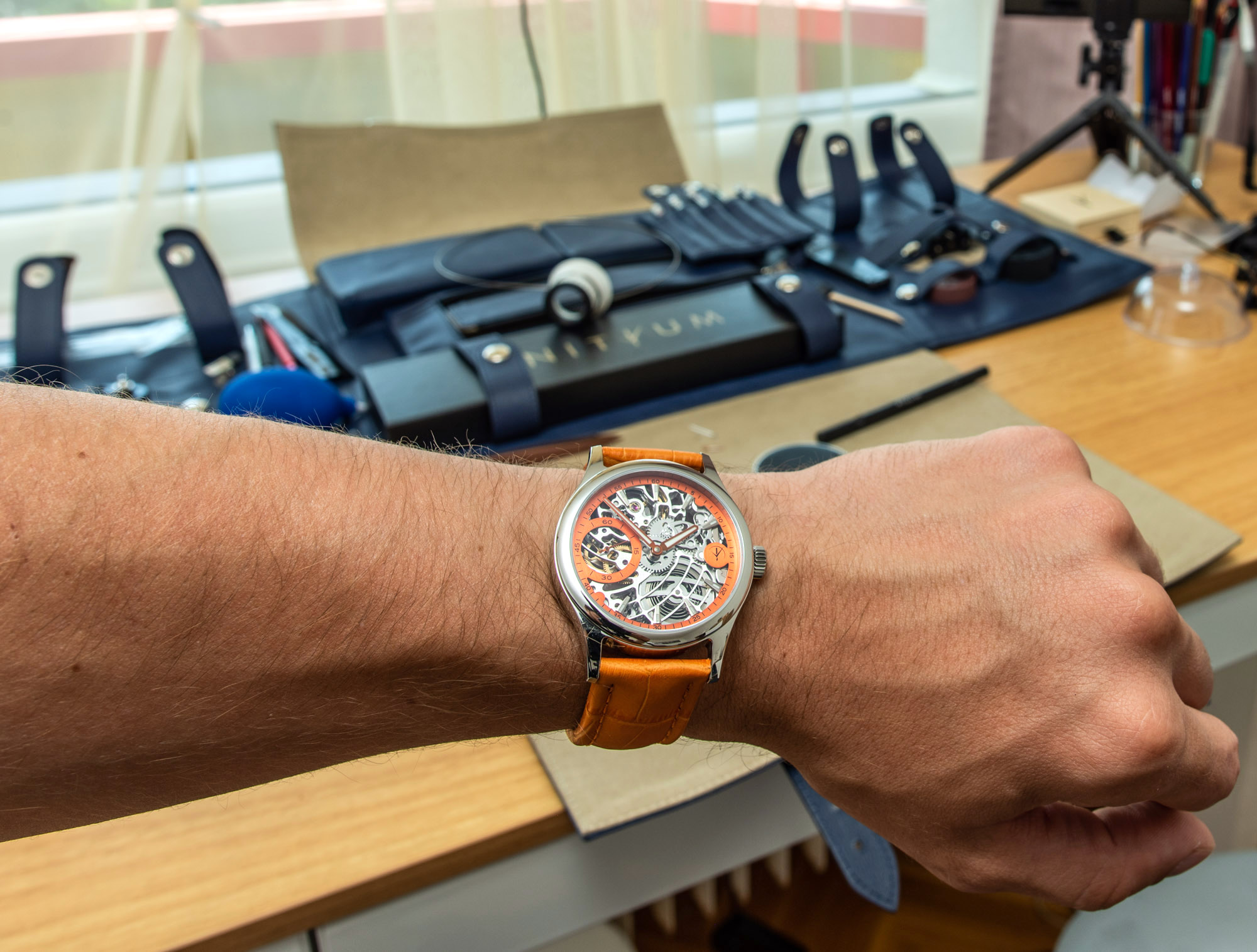
Unlike many tragic (but cheap) iterations of the 6497, this one may be expensive but manages to look it, too.
On the wrist is where the Initium Kairos gets really interesting because it’s a watch that you — or, in this case, I — made. Visiting the respective manufactures, photographing, and, of course, writing about the watches that I currently own means that I have had the privilege few have when it comes to familiarizing oneself with the most intricate details of their watch… But even all of those things, the visits, the interviews, the endless hours spent taking, reviewing and editing photos, all of those struggle to add up to the intimacy (for the lack of a better word) that one develops through putting their own watch together. With your face and loupe-covered eye up close to the uncased movement, using the rodico little eraser gum to pick the last piece of lint, or using the correct screwdriver to install a dial or case up a movement, is a truly fantastic and very personal experience.

Machine-made (as is generally the case on every watch at this price point and at least a few times over) bevelled edges, but they are everywhere. Large, faceted, applied hour markers add presence to the dial.
But can’t you do that with any watch you own? Sure, you can, but the platform that Initium has created, from the quality of the tools to the depth and helpfulness of the online video course, adds peace of mind because you just know, everything will fit together, work together, and you’ll have every last bit of guidance you need to do a good job. And yet, the challenge is still there, because ultimately it will be you who’s performing every action, making this, again, a genuinely personal experience. Oh, and in case you’d want more of a challenge, with the tool kit you have just about everything you’ll need to remove at least the more major components of the 6497 movement and then put it all back together. It’s a very friendly movement, big, robust, and easy to work on, so you can really go in there and do more if you want even more bragging rights from the watch that you assembled.
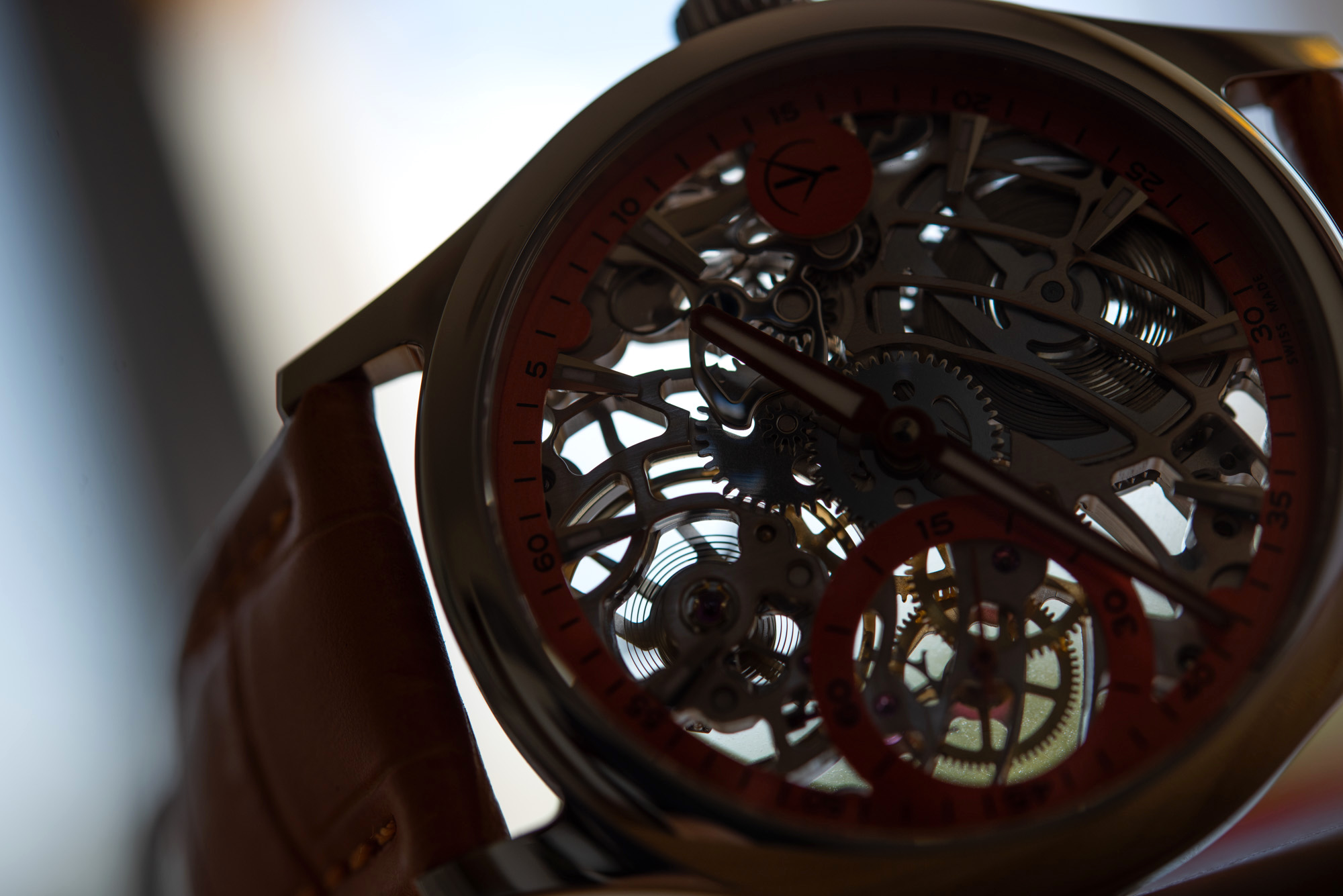
Summary
I would highly recommend the Initium Kairos watchmaking kit to anyone who wants to get a taste of watchmaking and do so in a guided, safe, yet rewarding setting, with the result being a genuinely nice watch — a head-turner, in fact — as opposed to something that gives off strong DIY project vibes. The most surprising element of the kit, even with the relatively high cost in mind, was the extent of configurability, quality of the presentation, tools, dial, and movement. Other than the case design, no corners have been cut in terms of quality or cost of components. Unpacking the neat blue leather bag and realizing that it will create the perfect working environment is a strong start that is followed by a movement and other parts of more than adequate execution, and a likable and insightful online course. It is clear that Initium, despite being the small company that it is, has put tremendous effort into nailing this entire process from start to finish, and, to close on a personal note, I respect that deeply.
The price for the Initium Kairos watch is 2,990 Swiss Francs and the watchmaking tool kit is an additional 500 Swiss Francs for a total of 3,490 Swiss Francs. Alternatively, you can assemble your watch at one of the watchmaking workshops that Initium has also been organizing in Switzerland, the cost of that is the same as the tool kit. You can learn more on the brand’s website.

